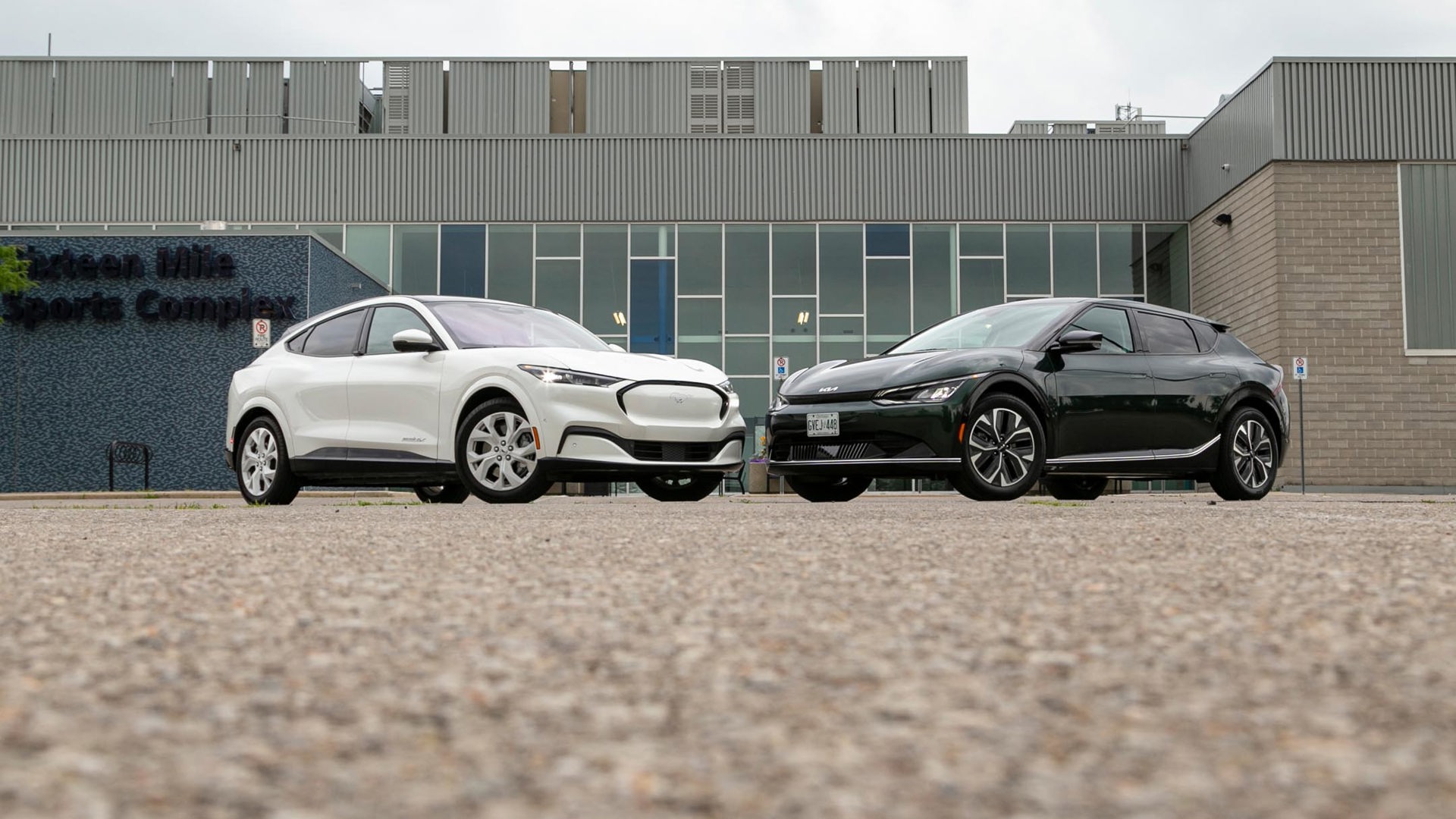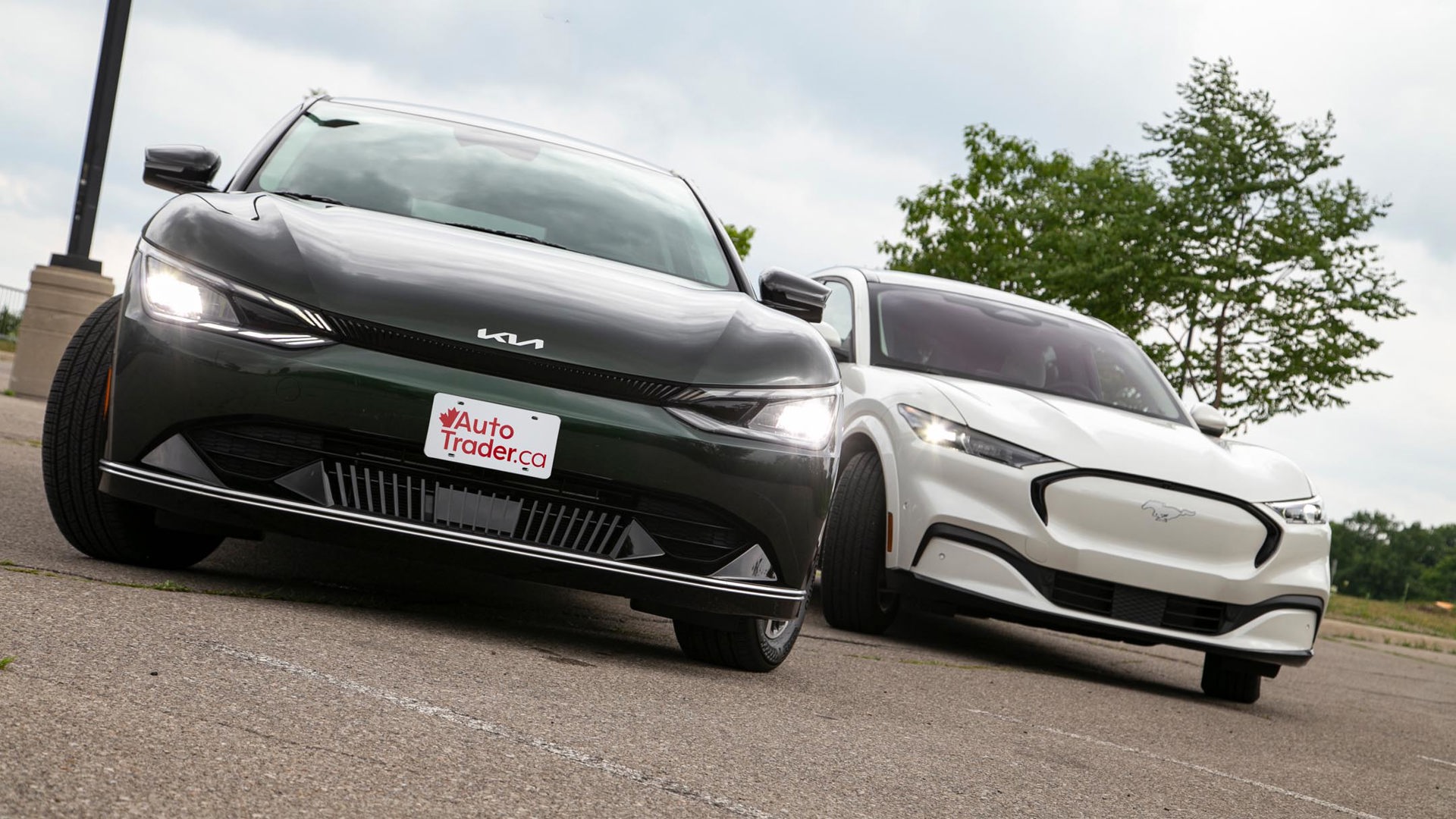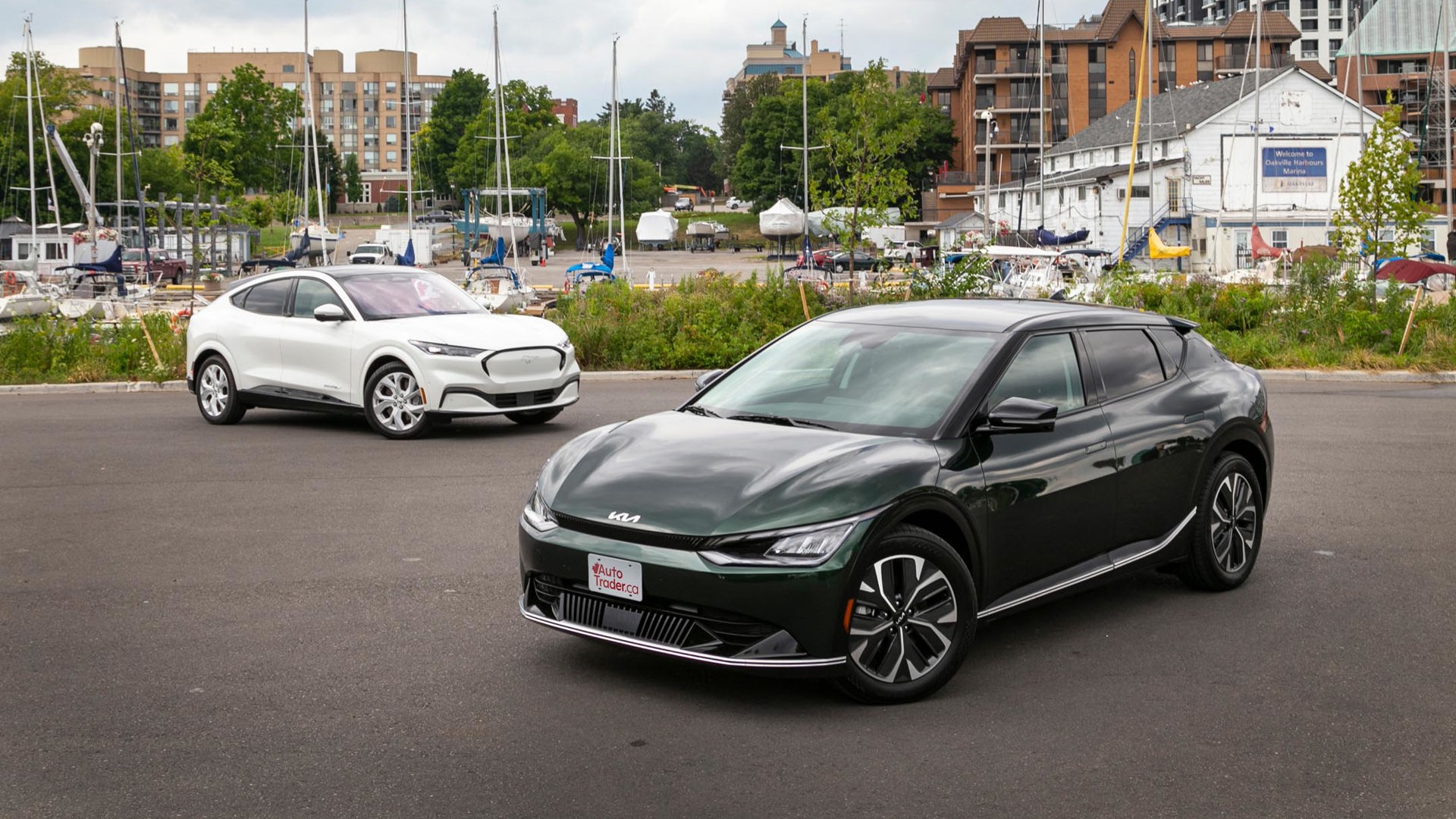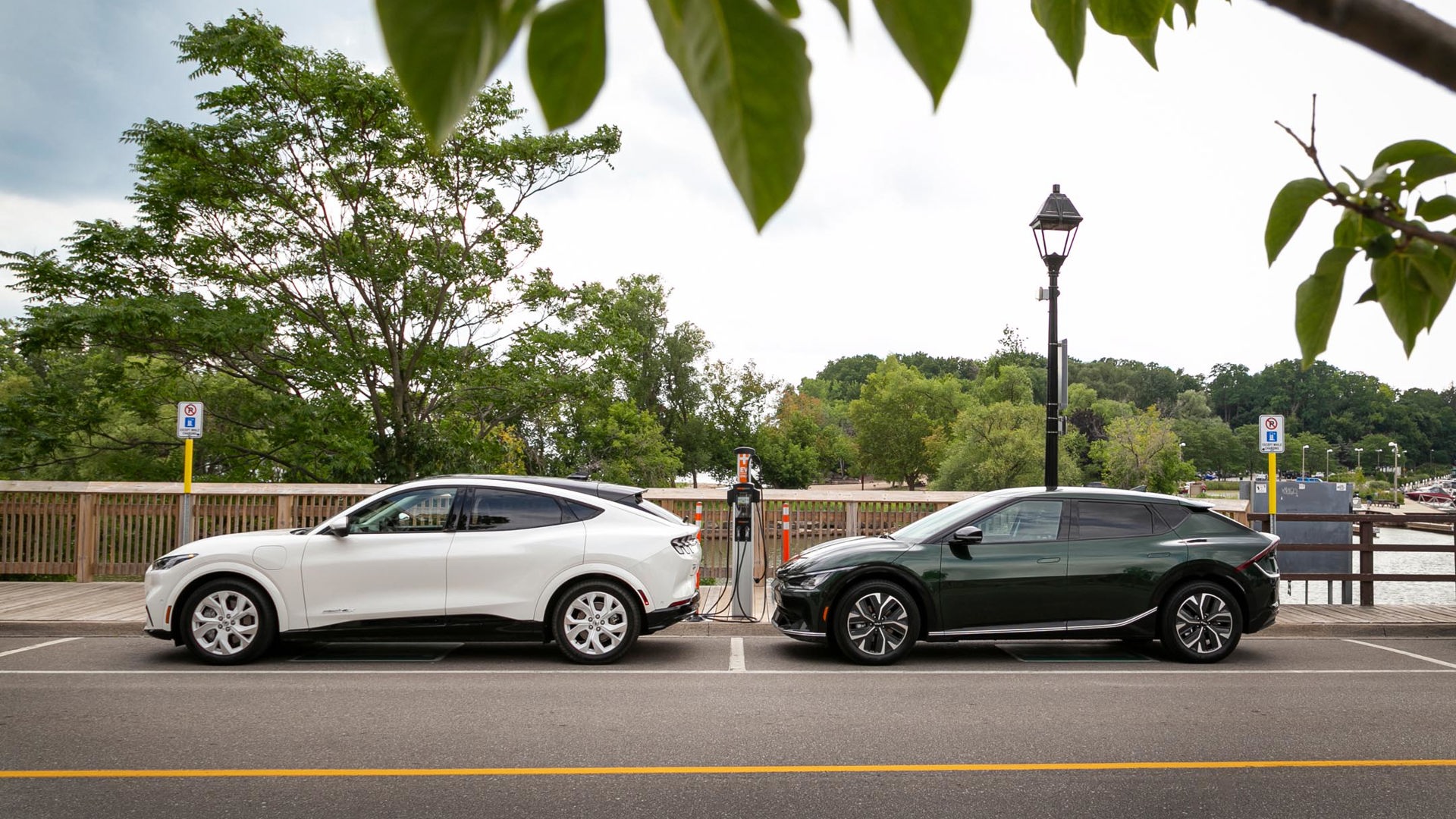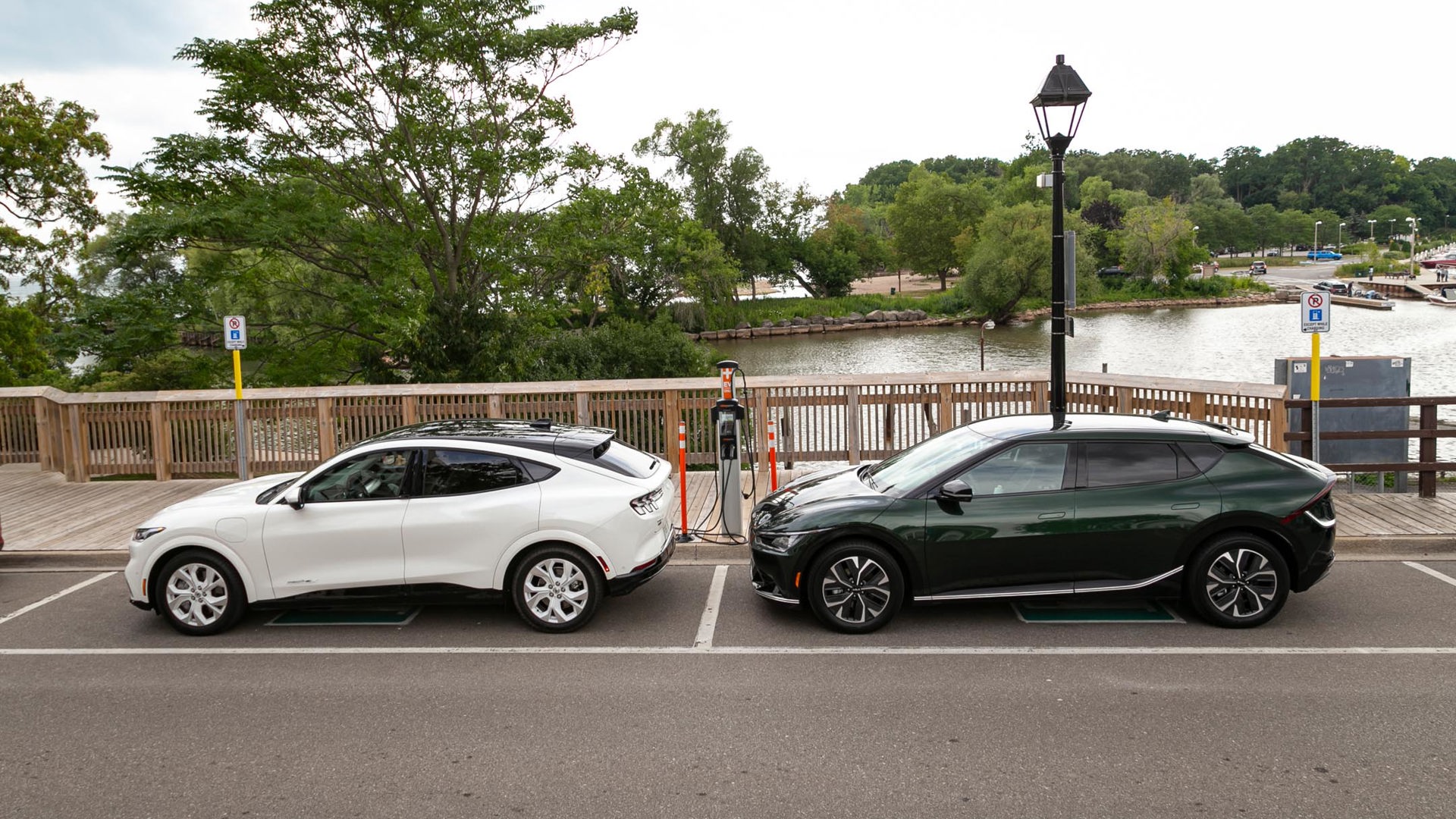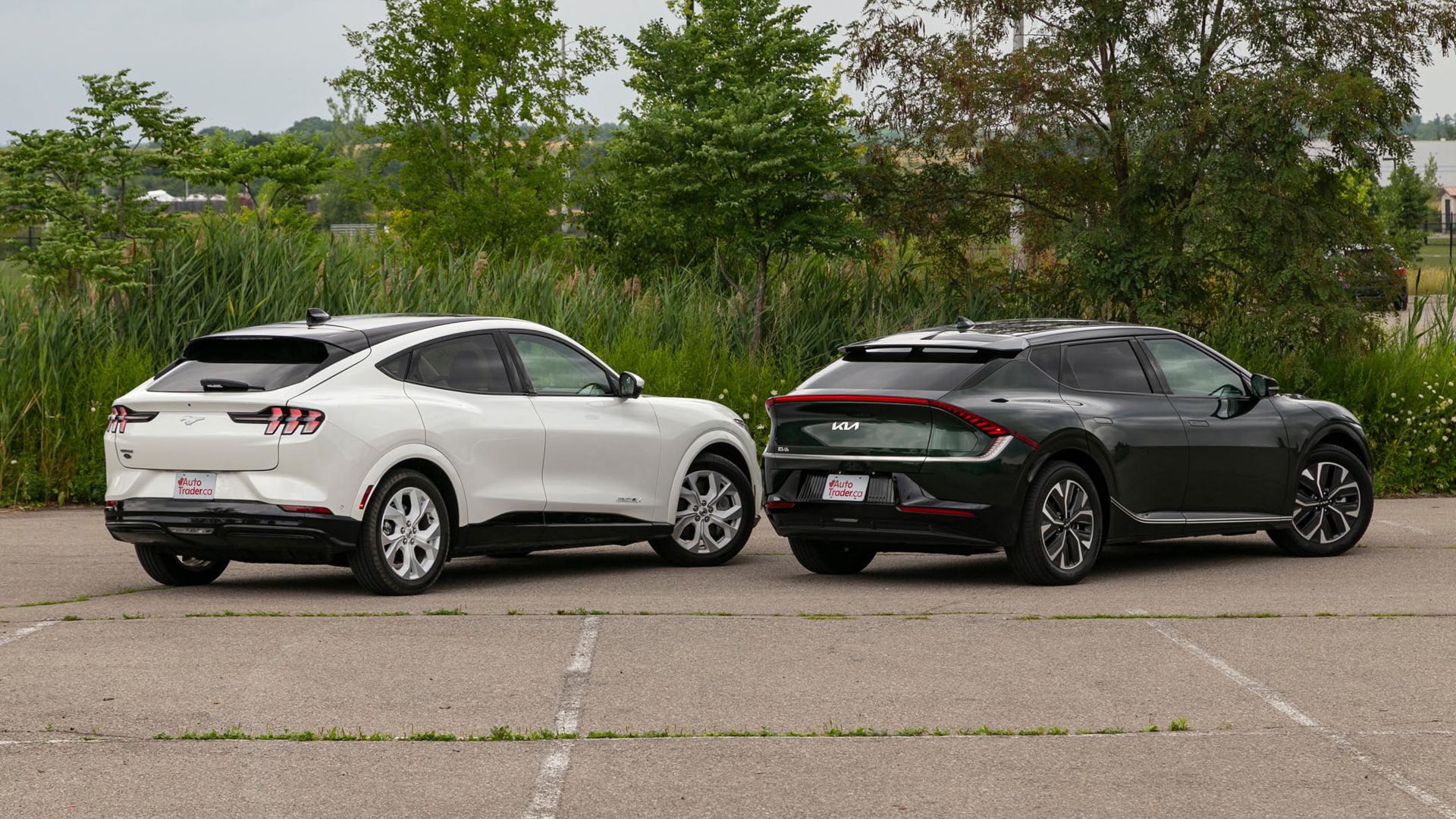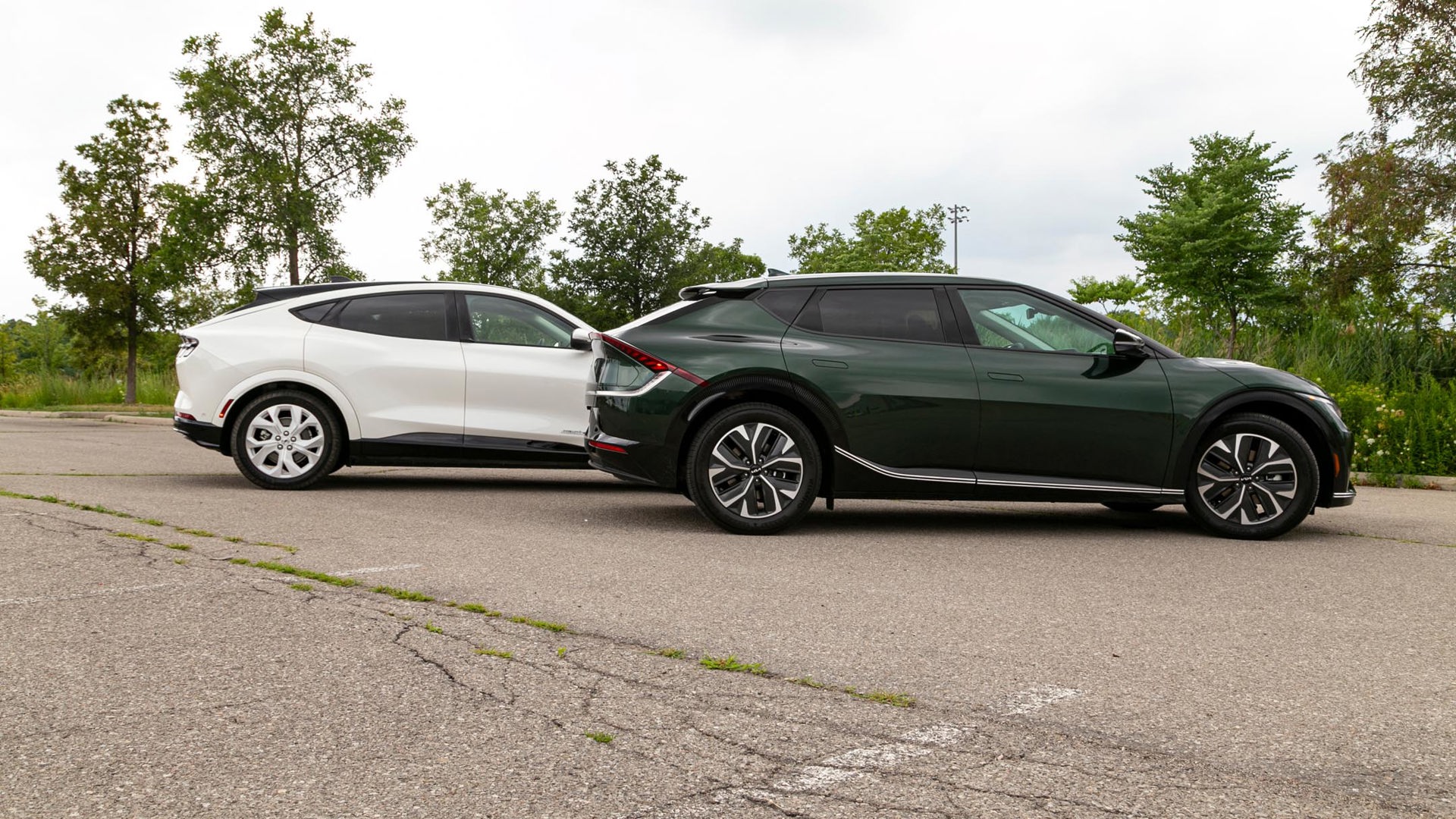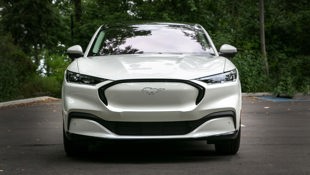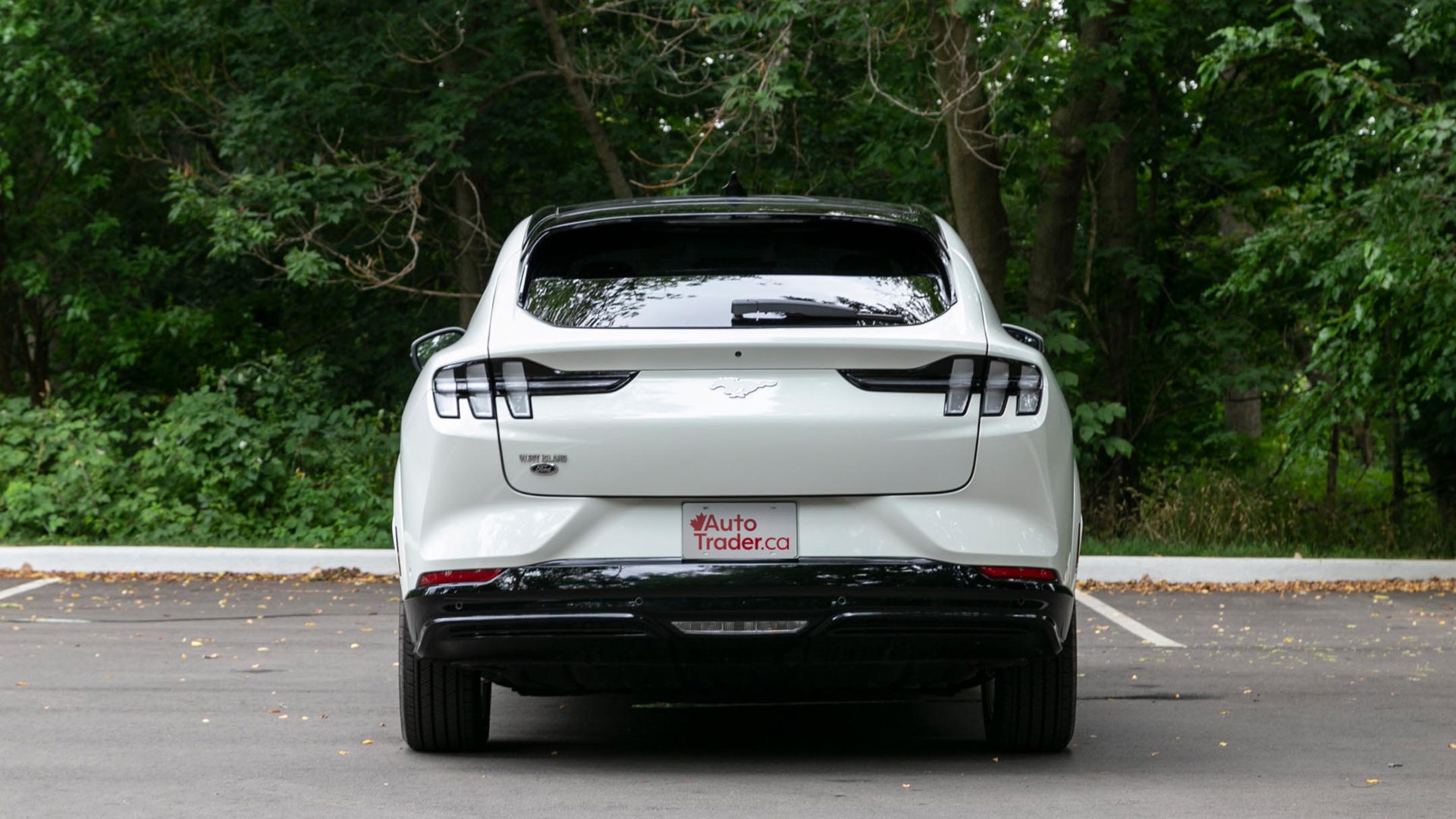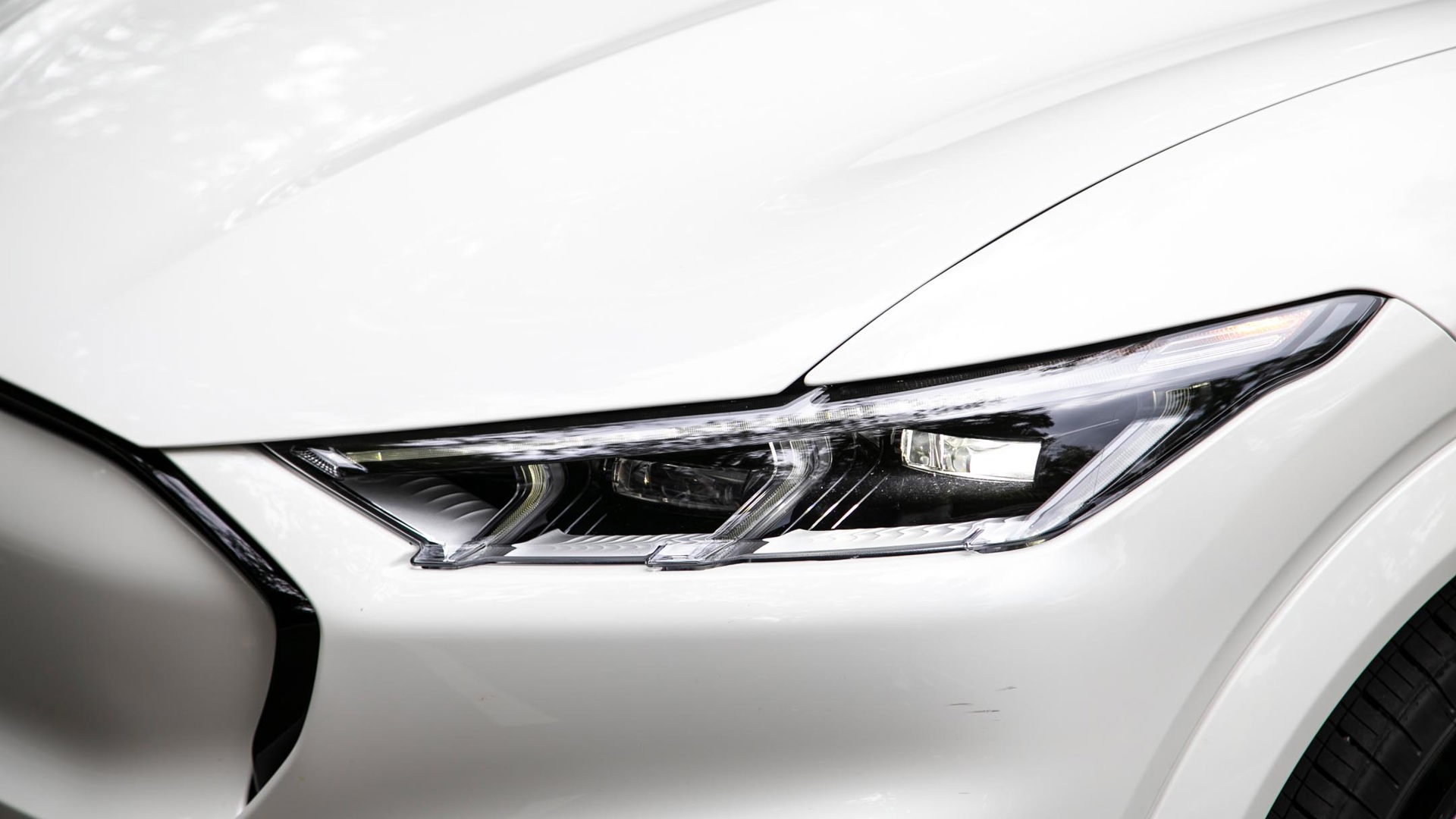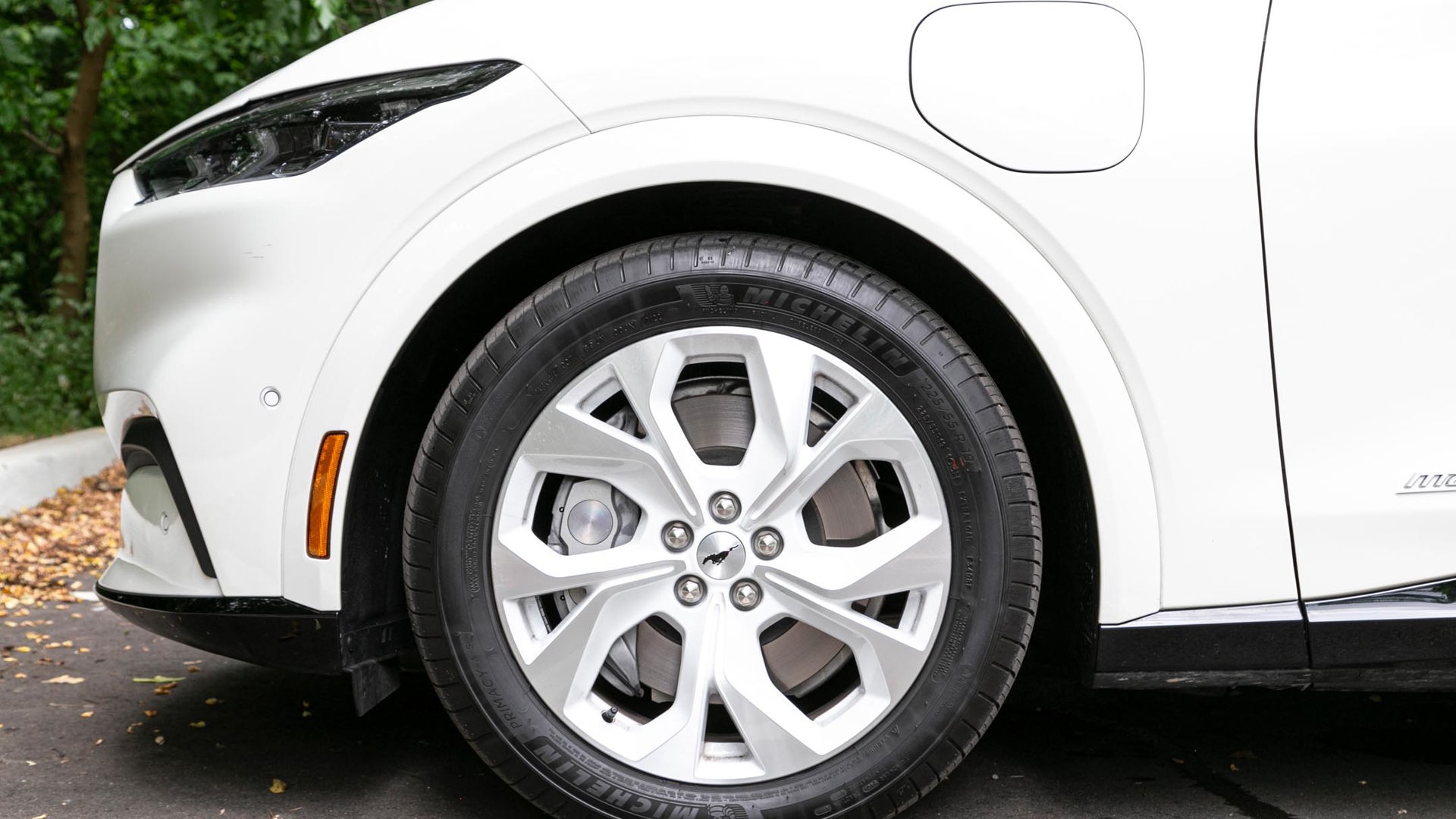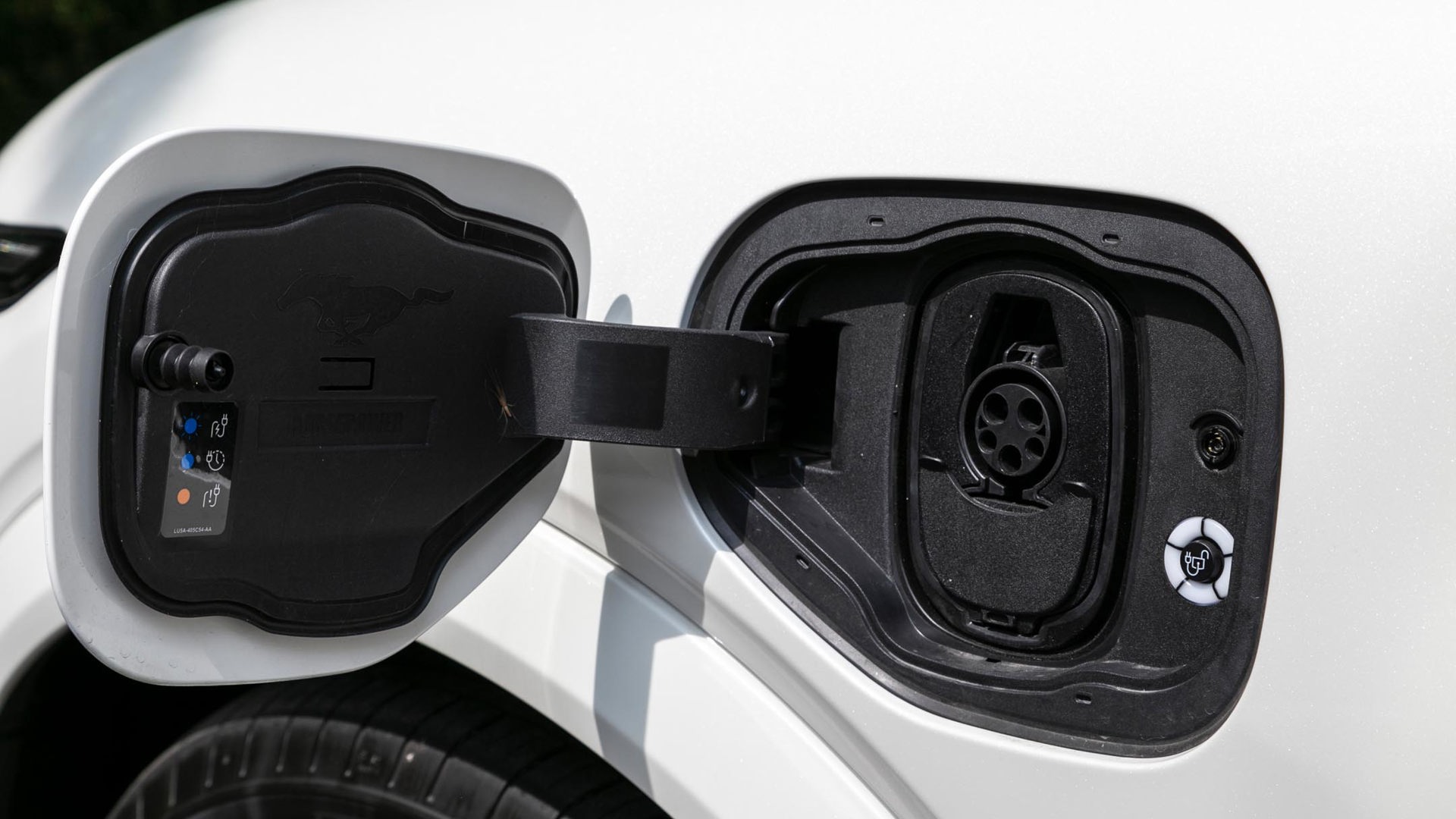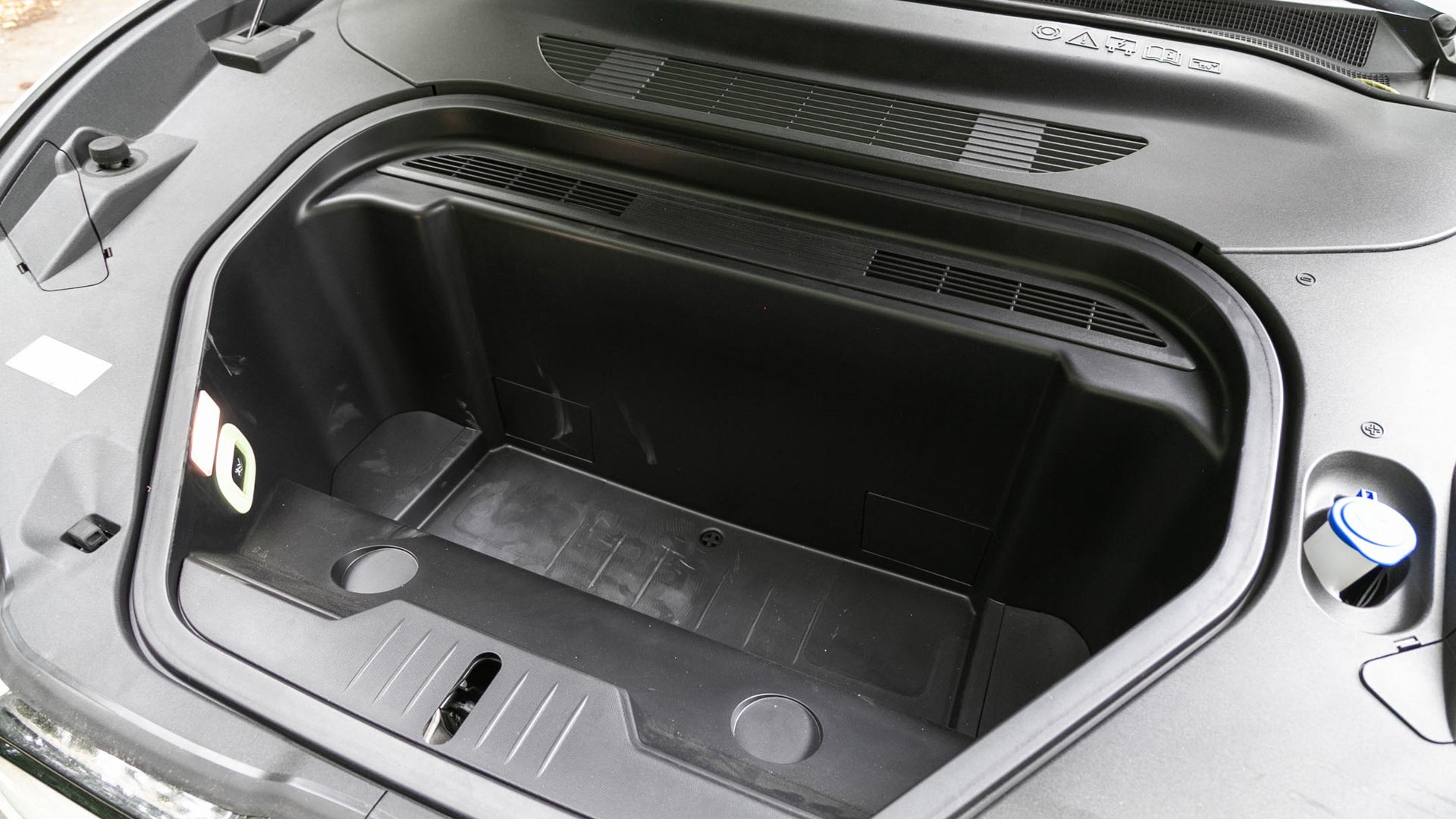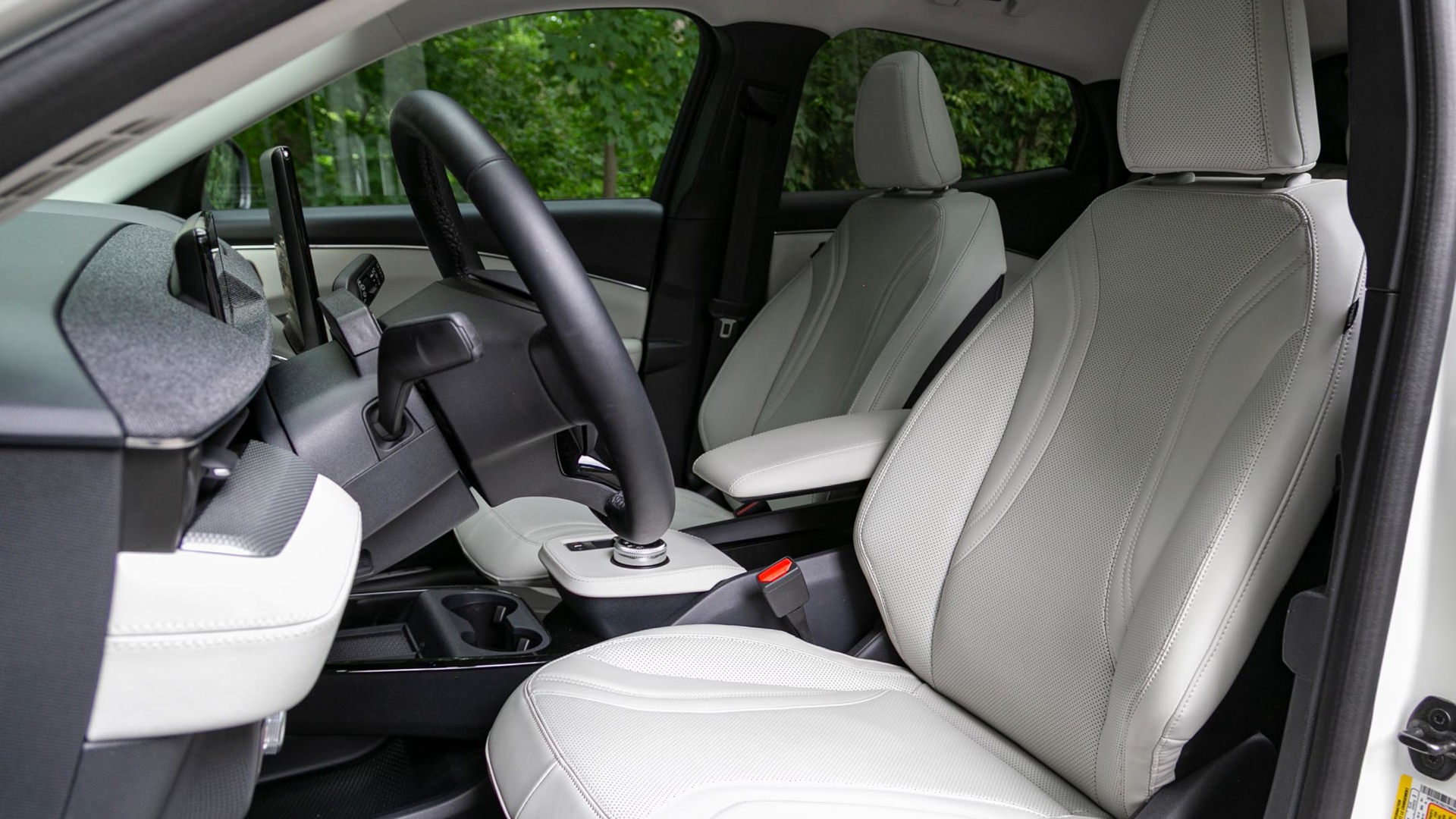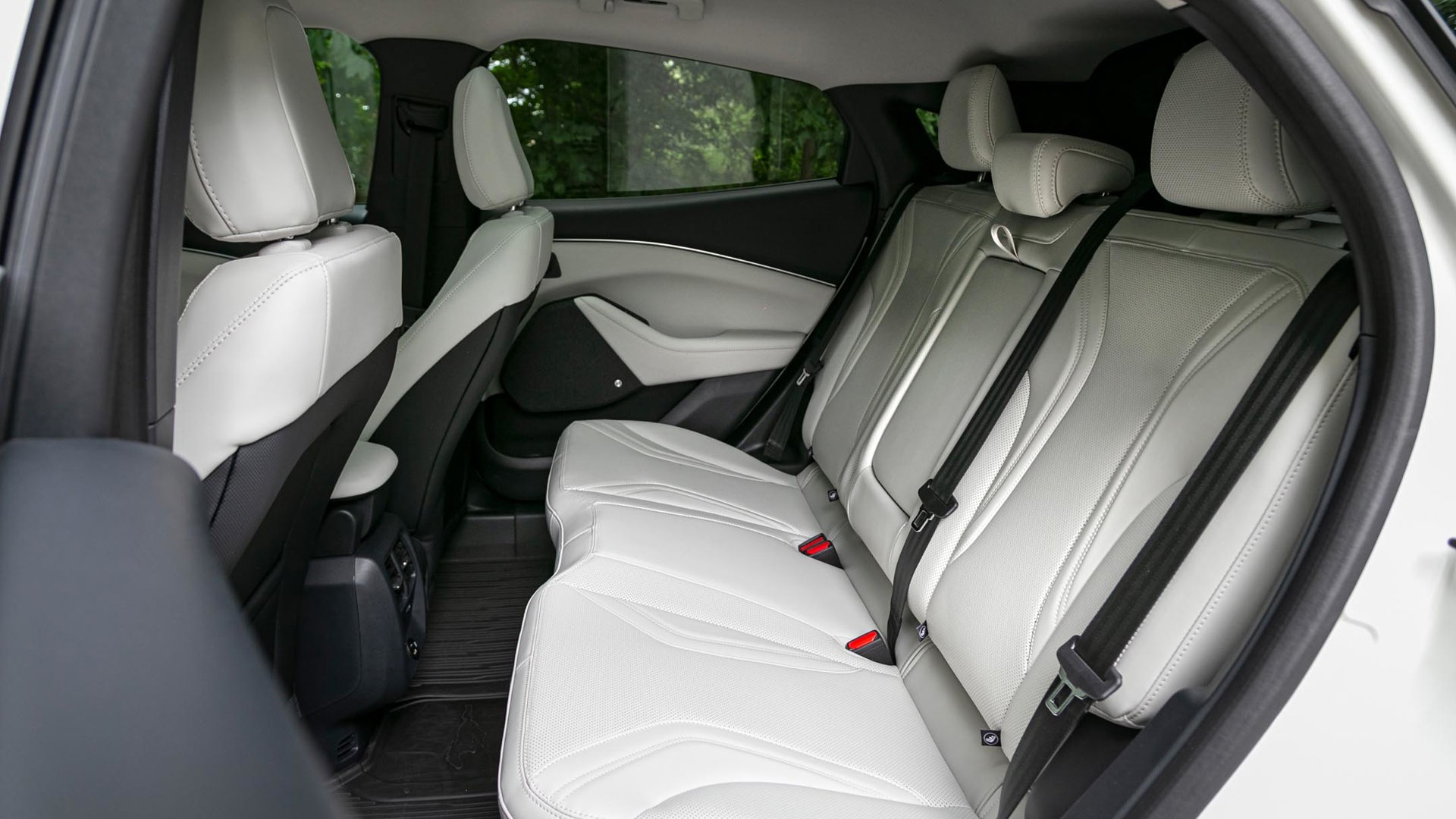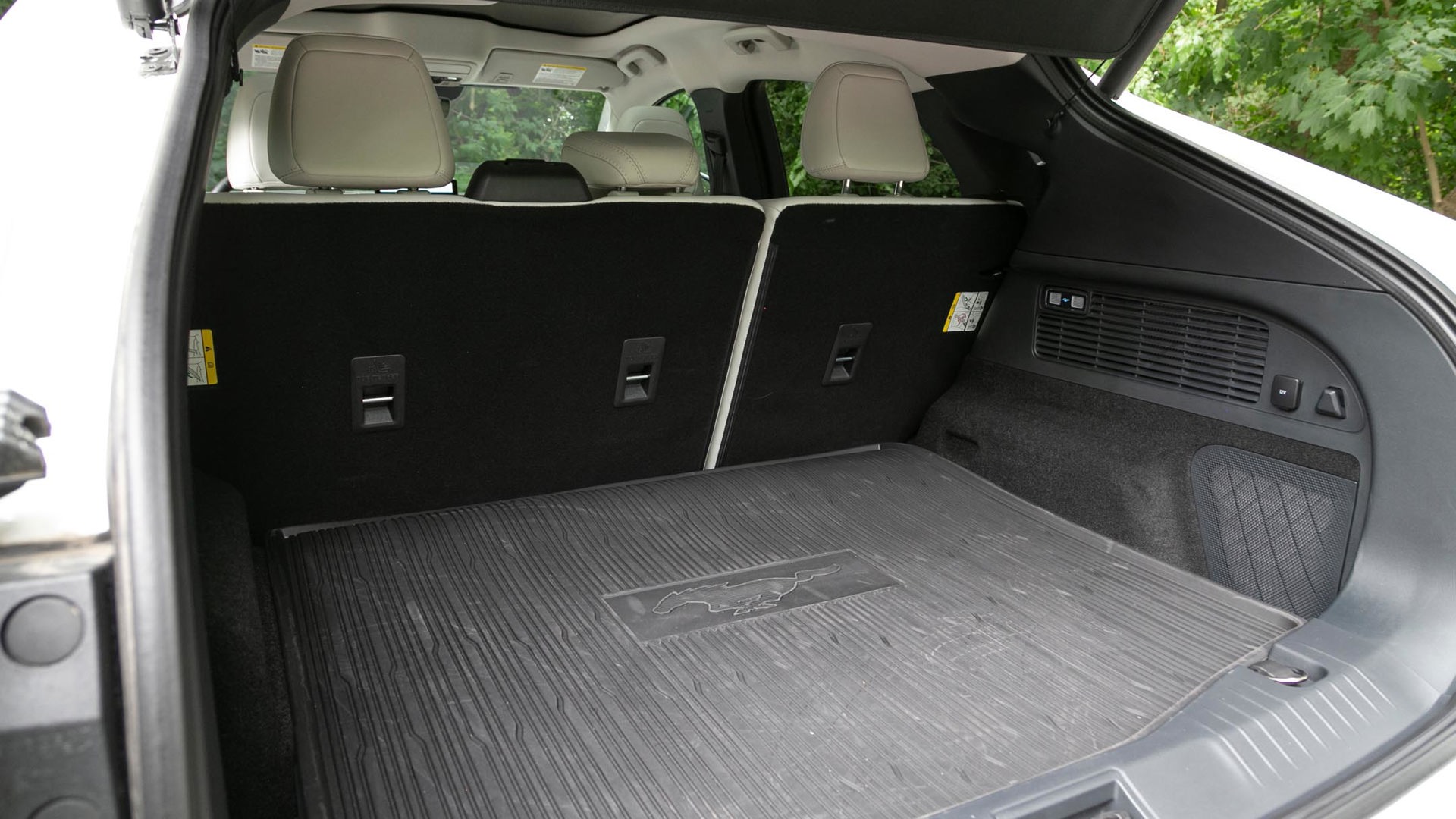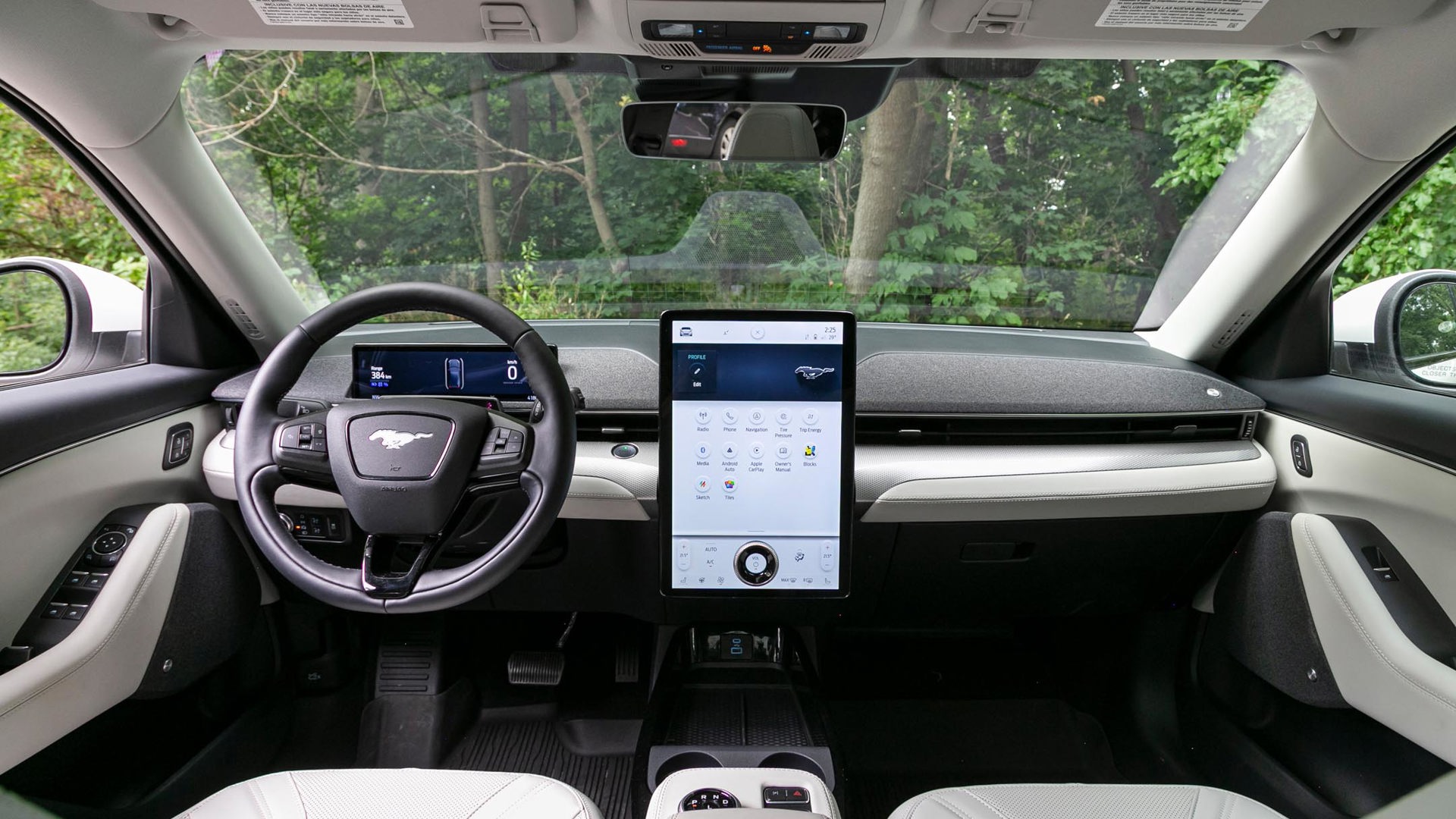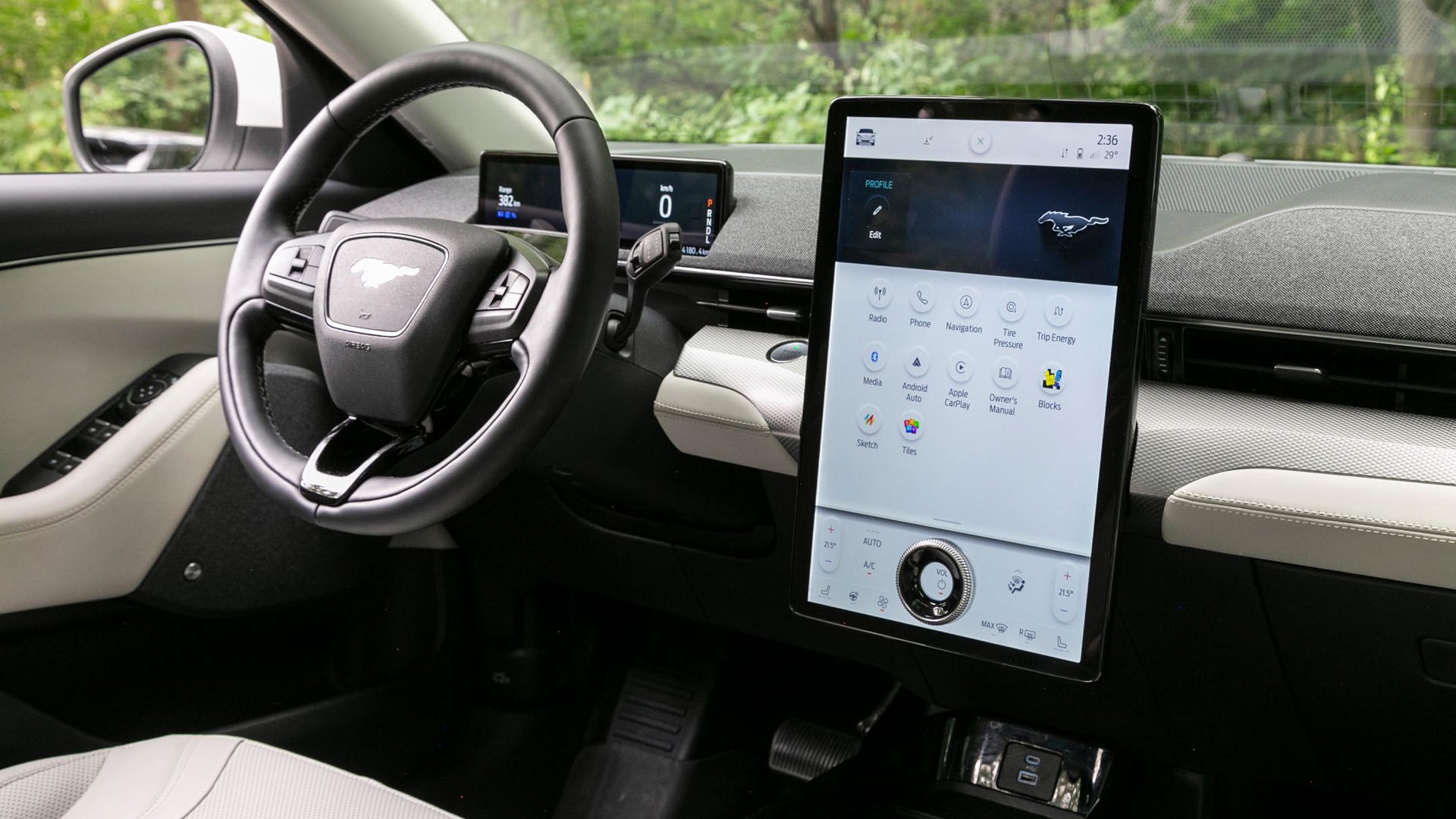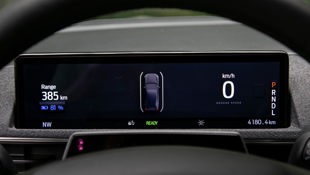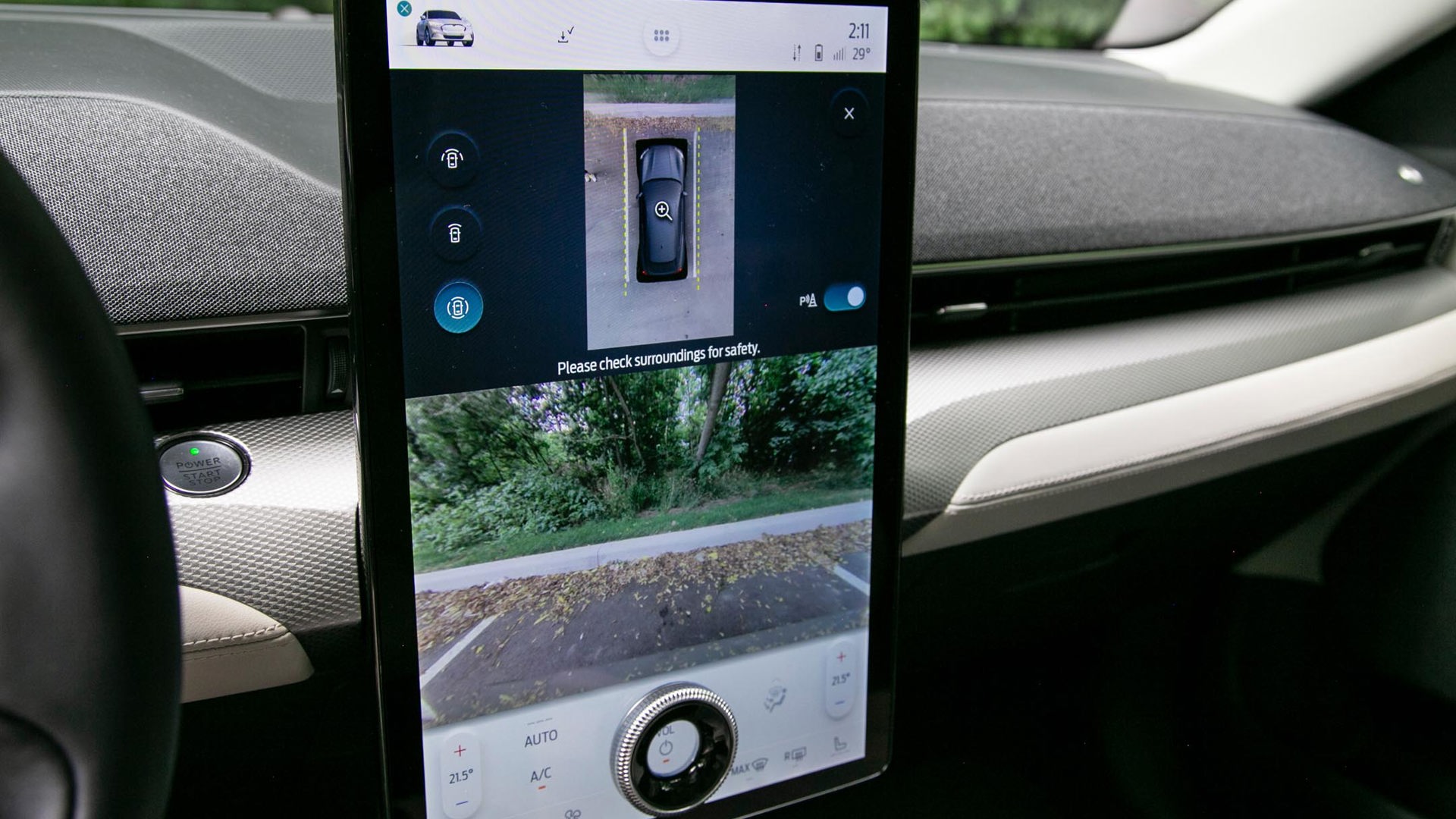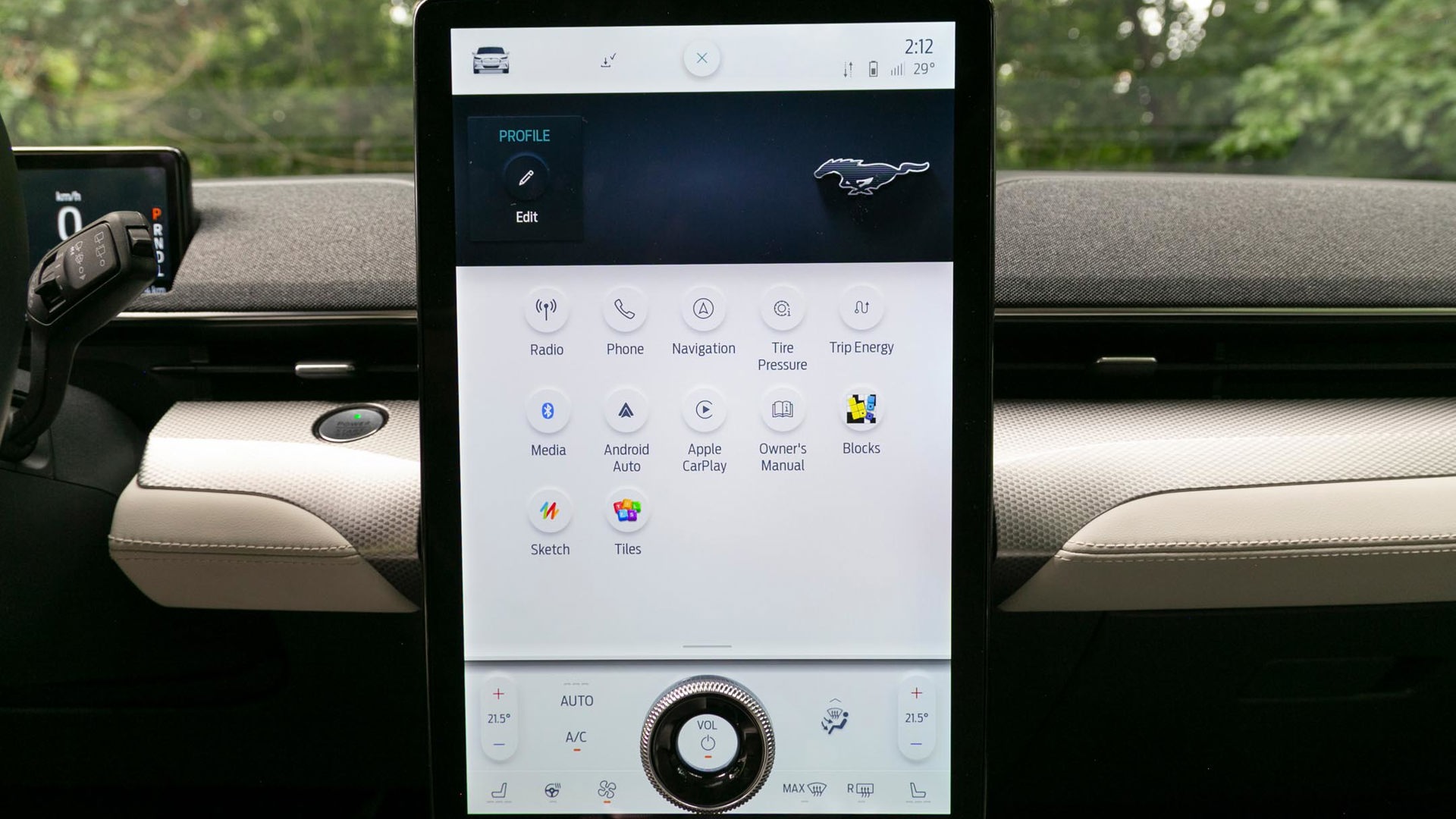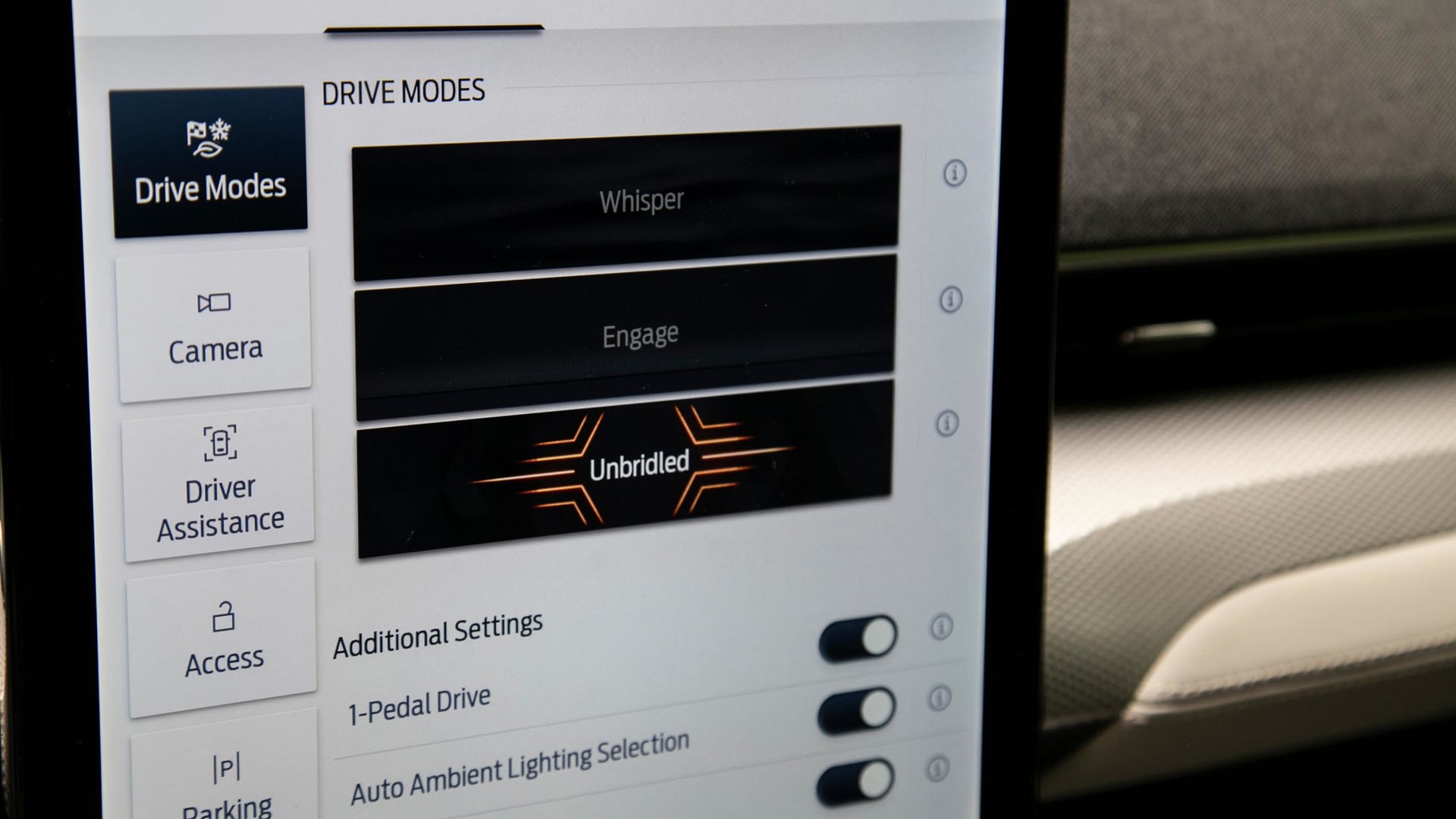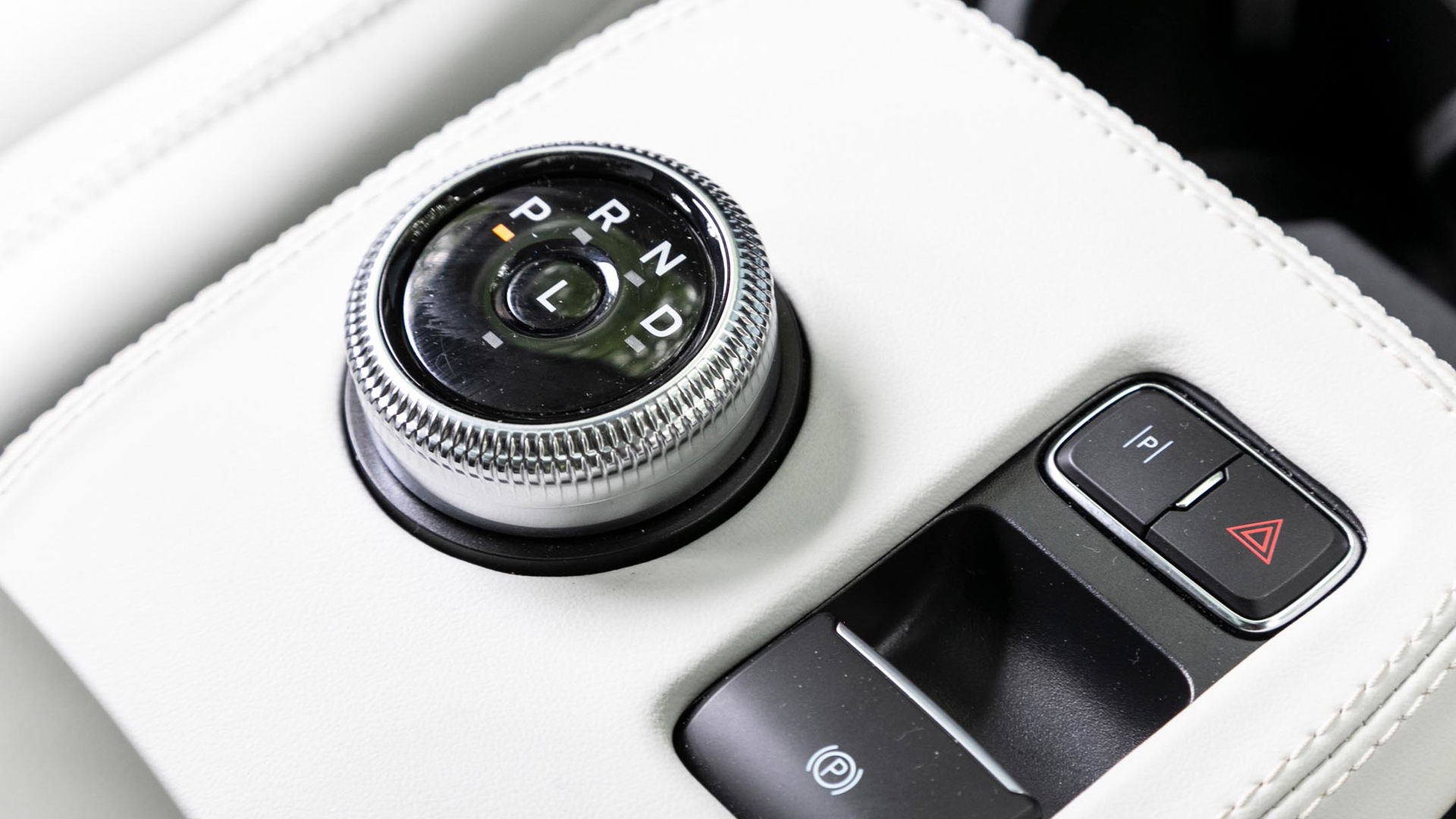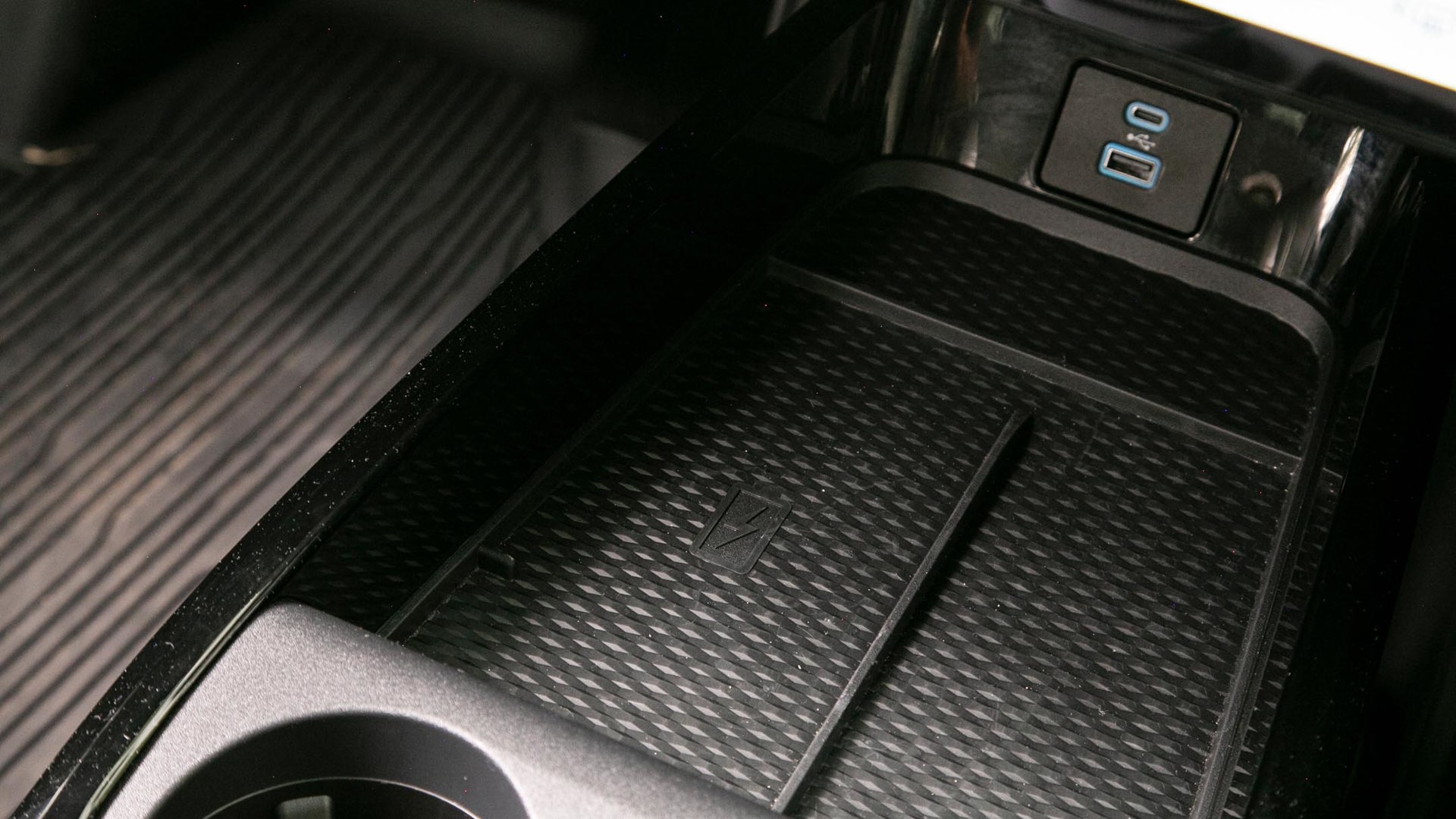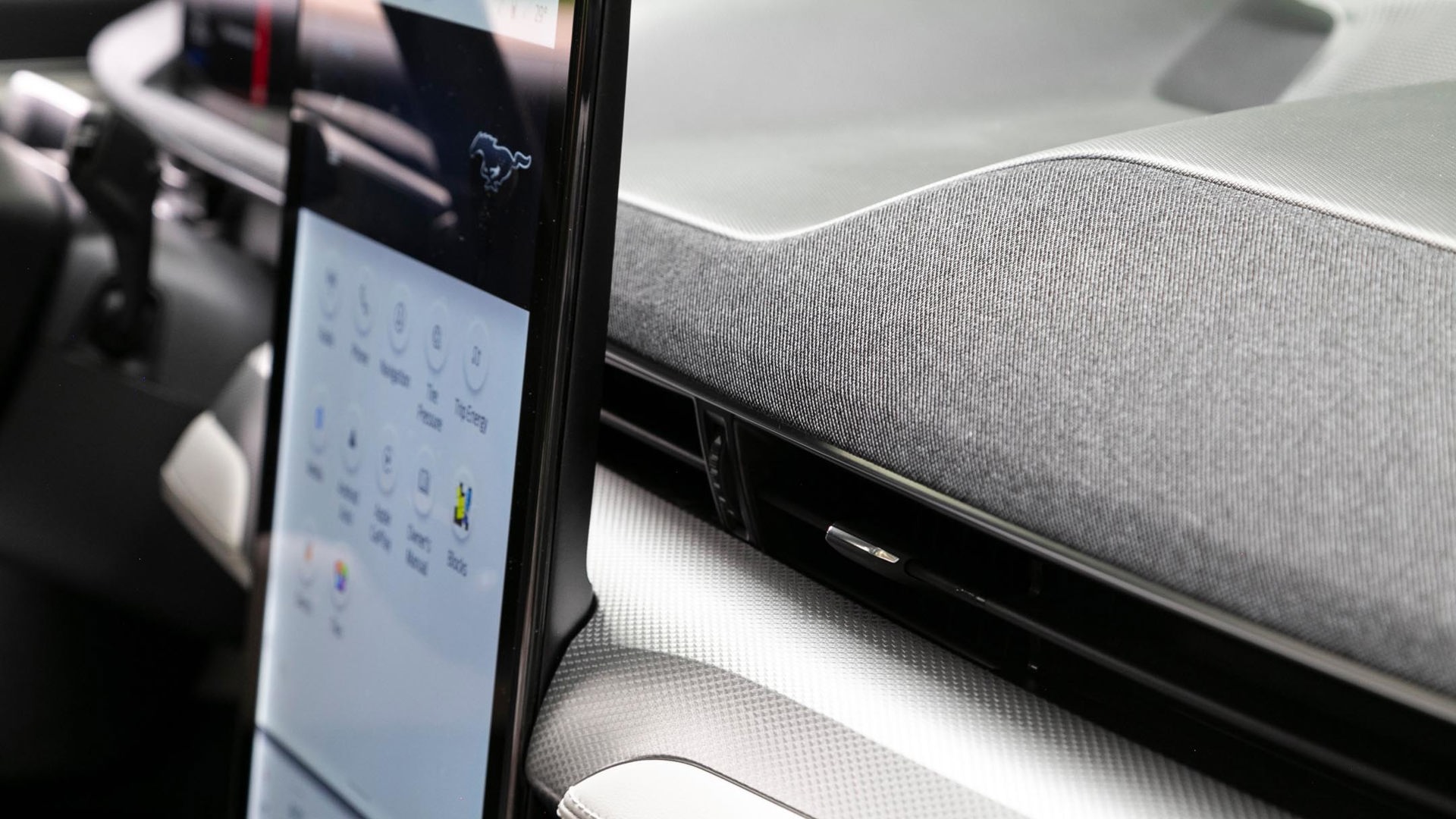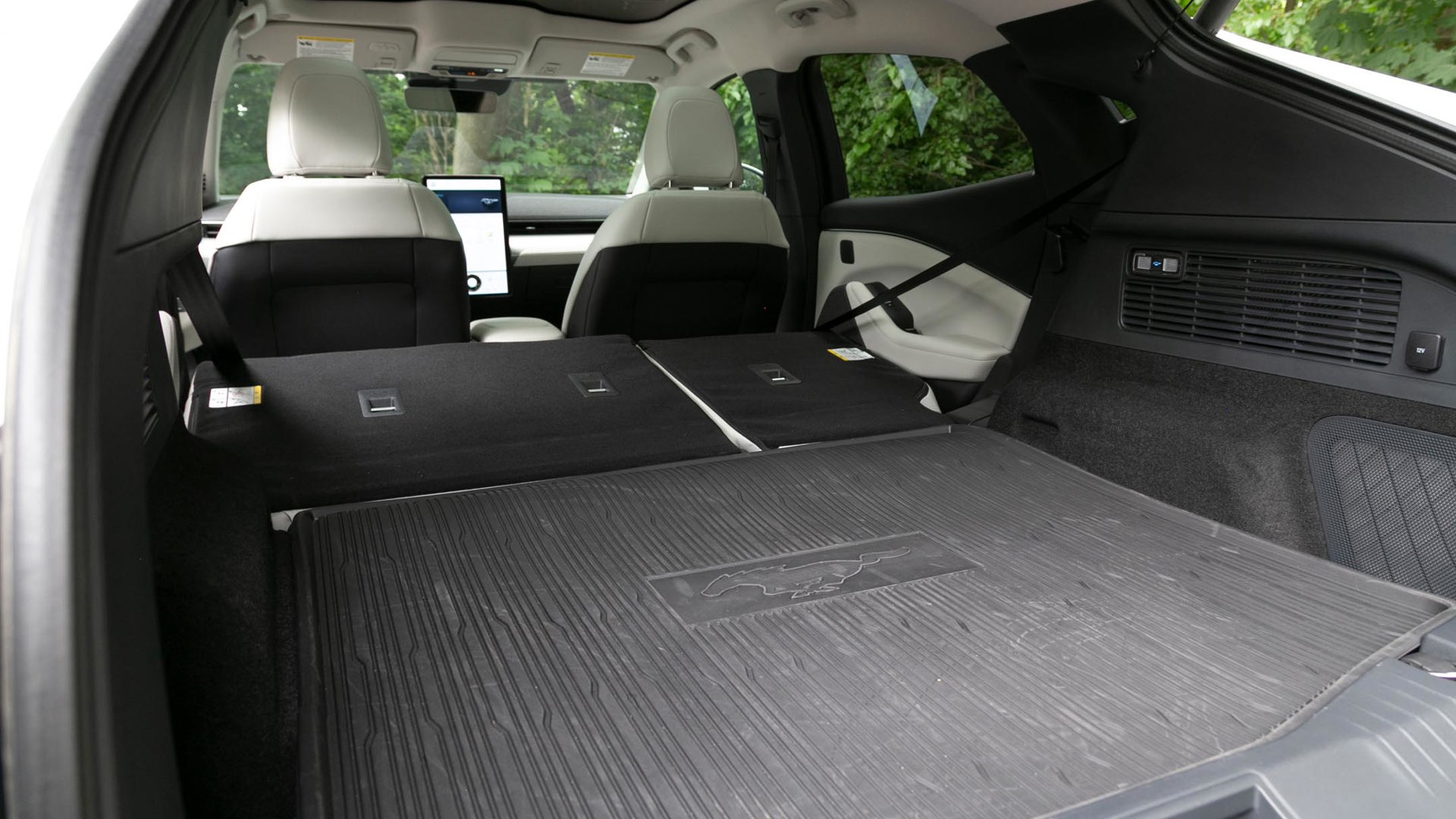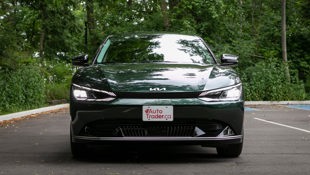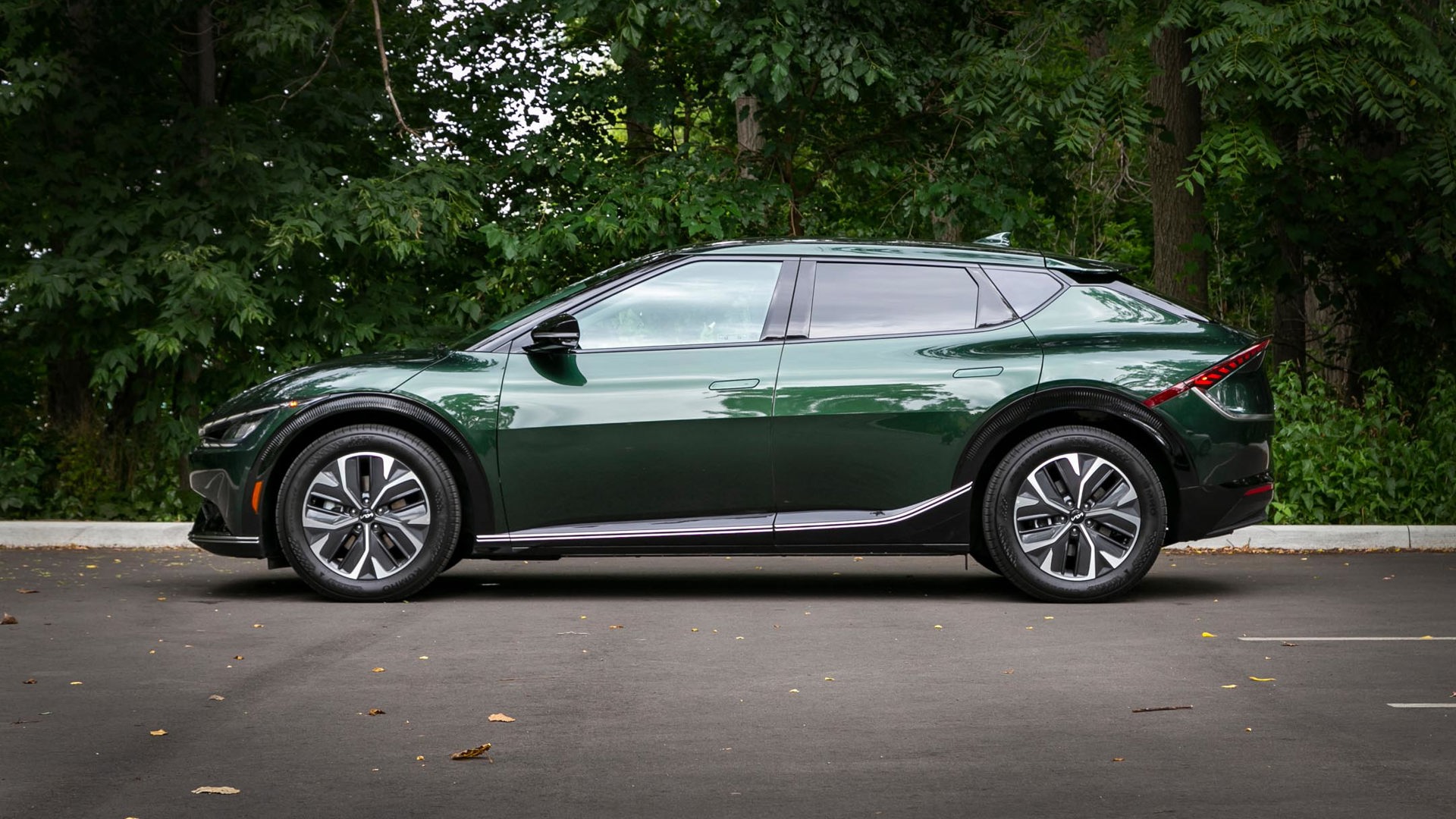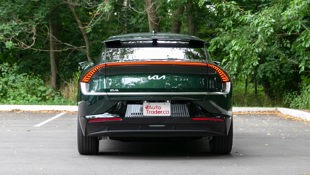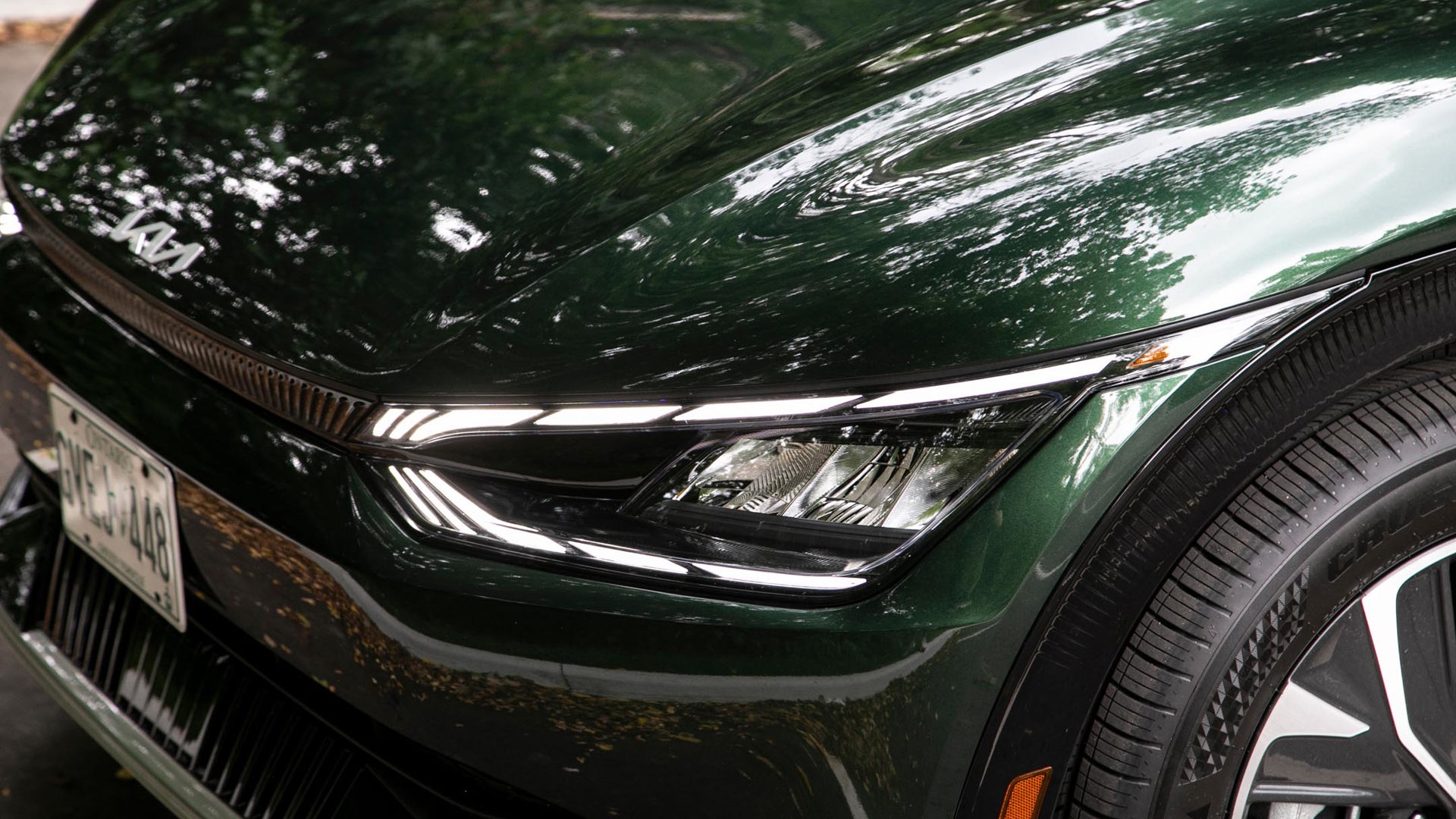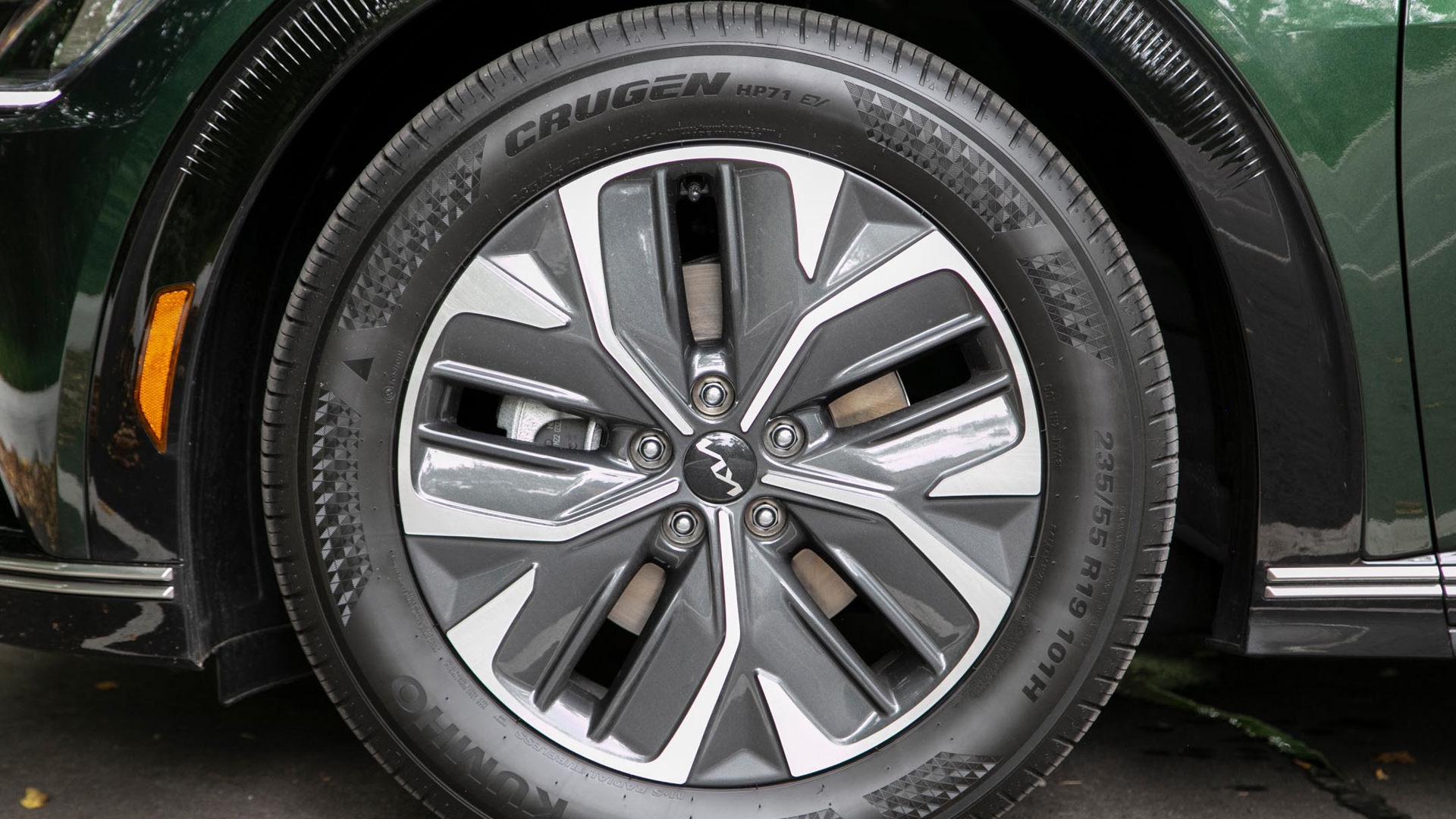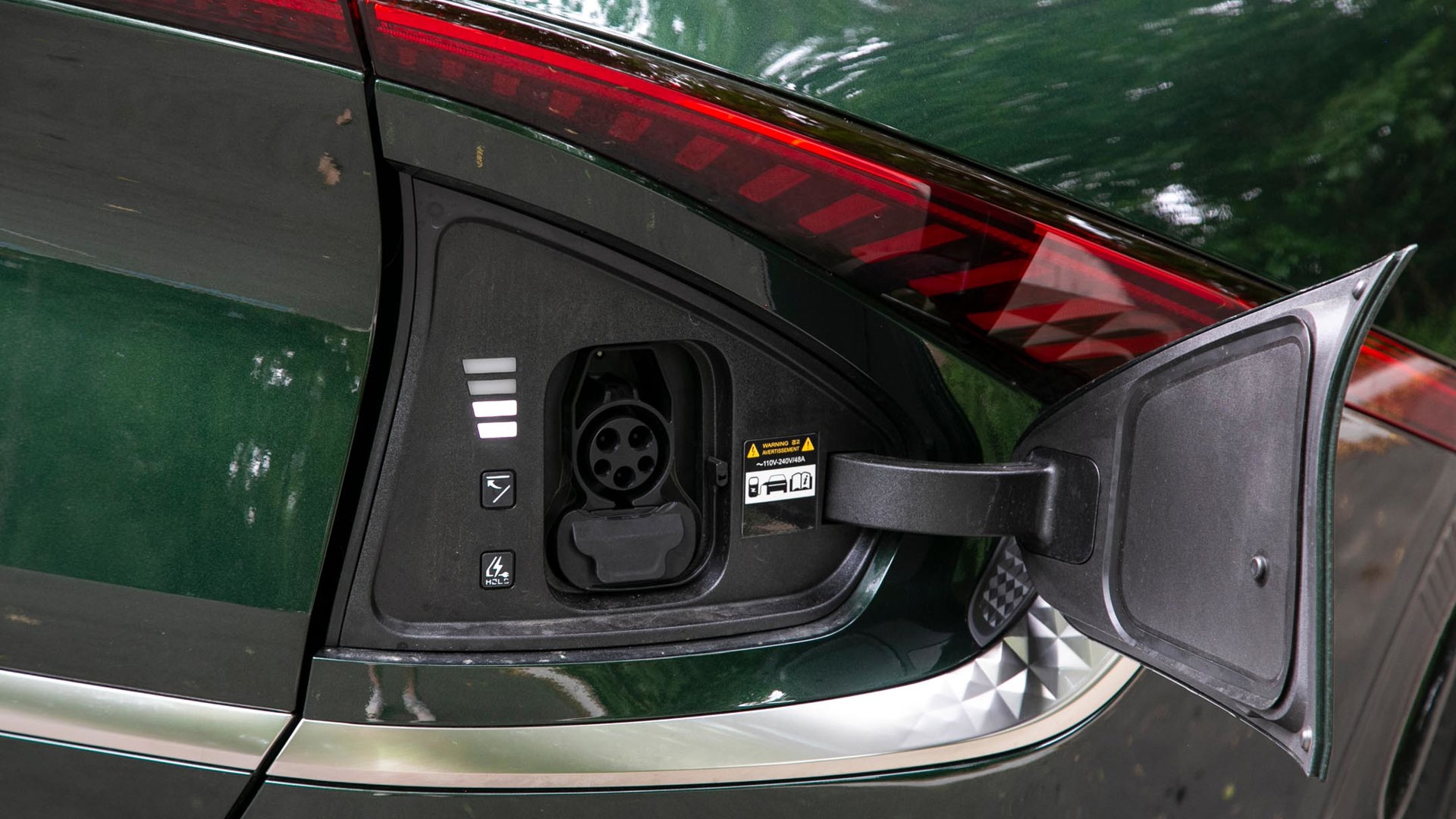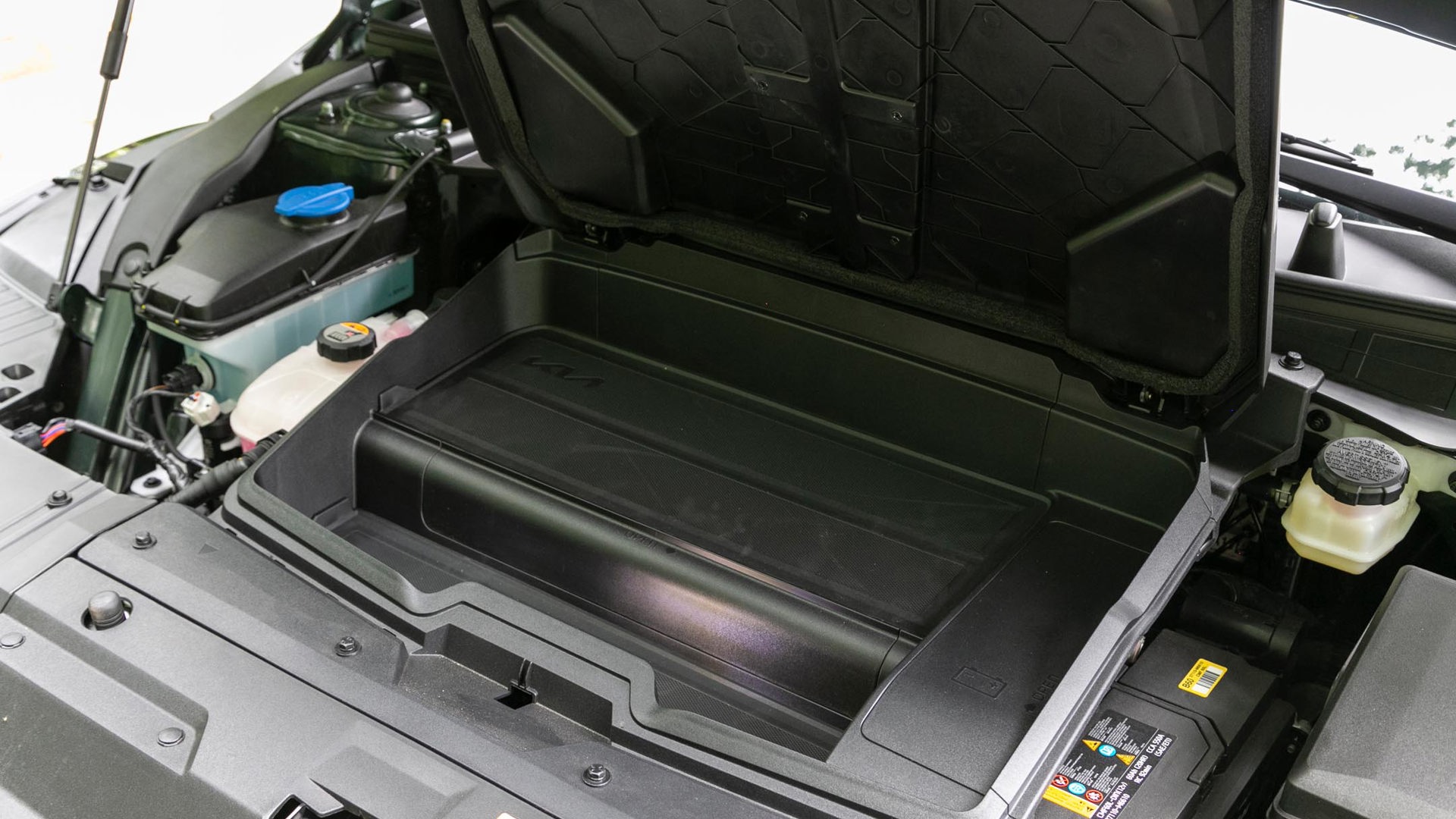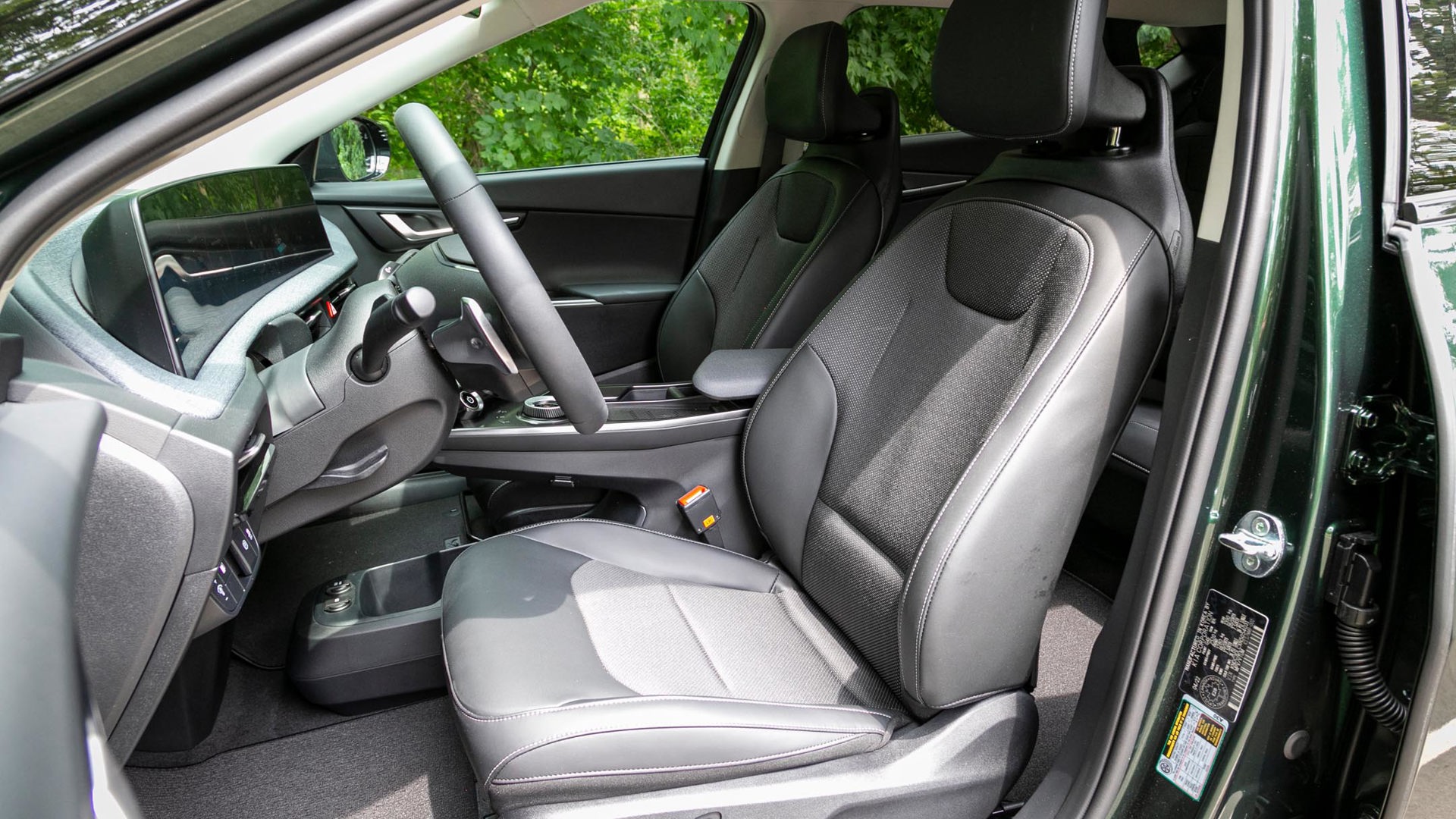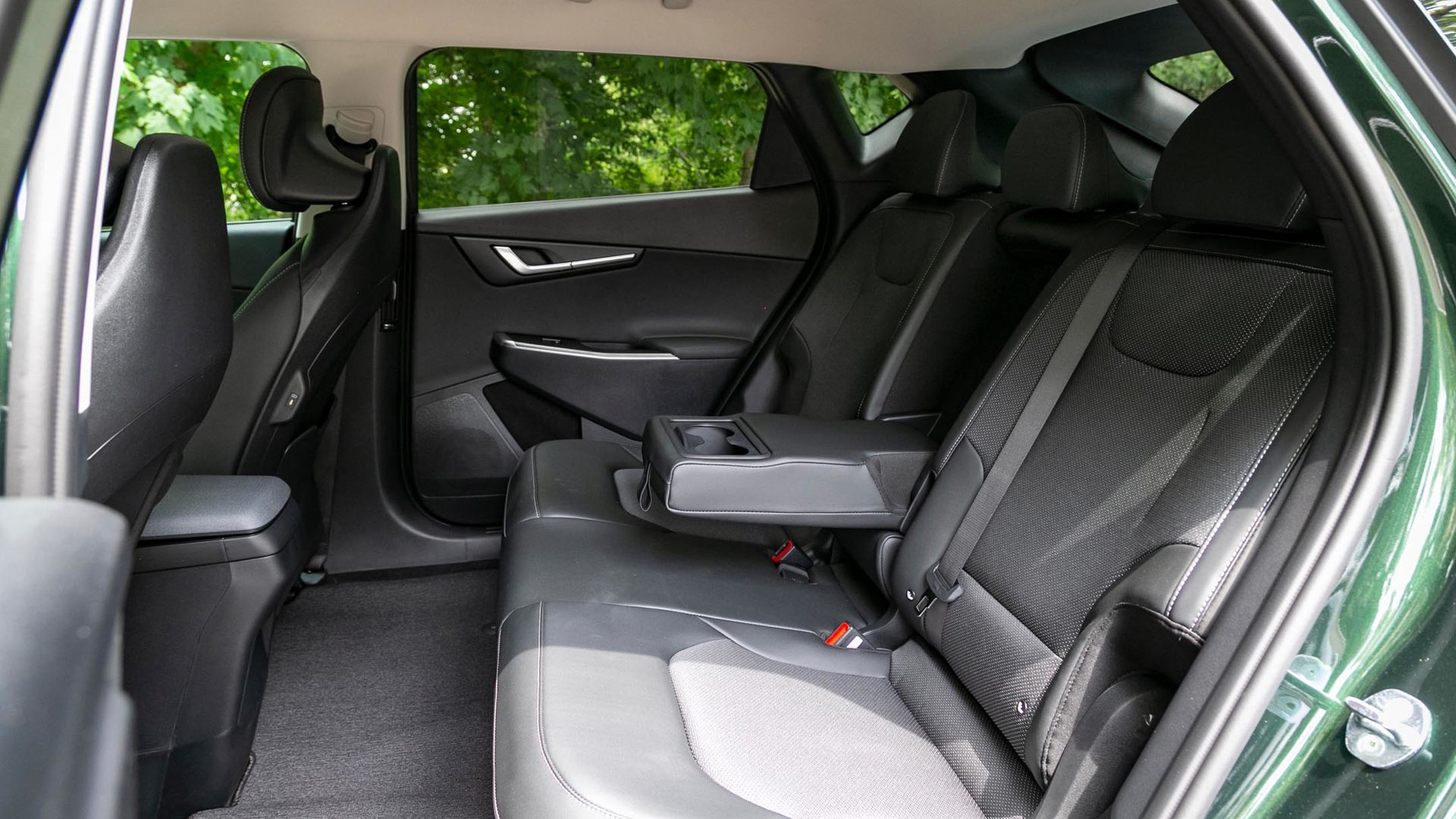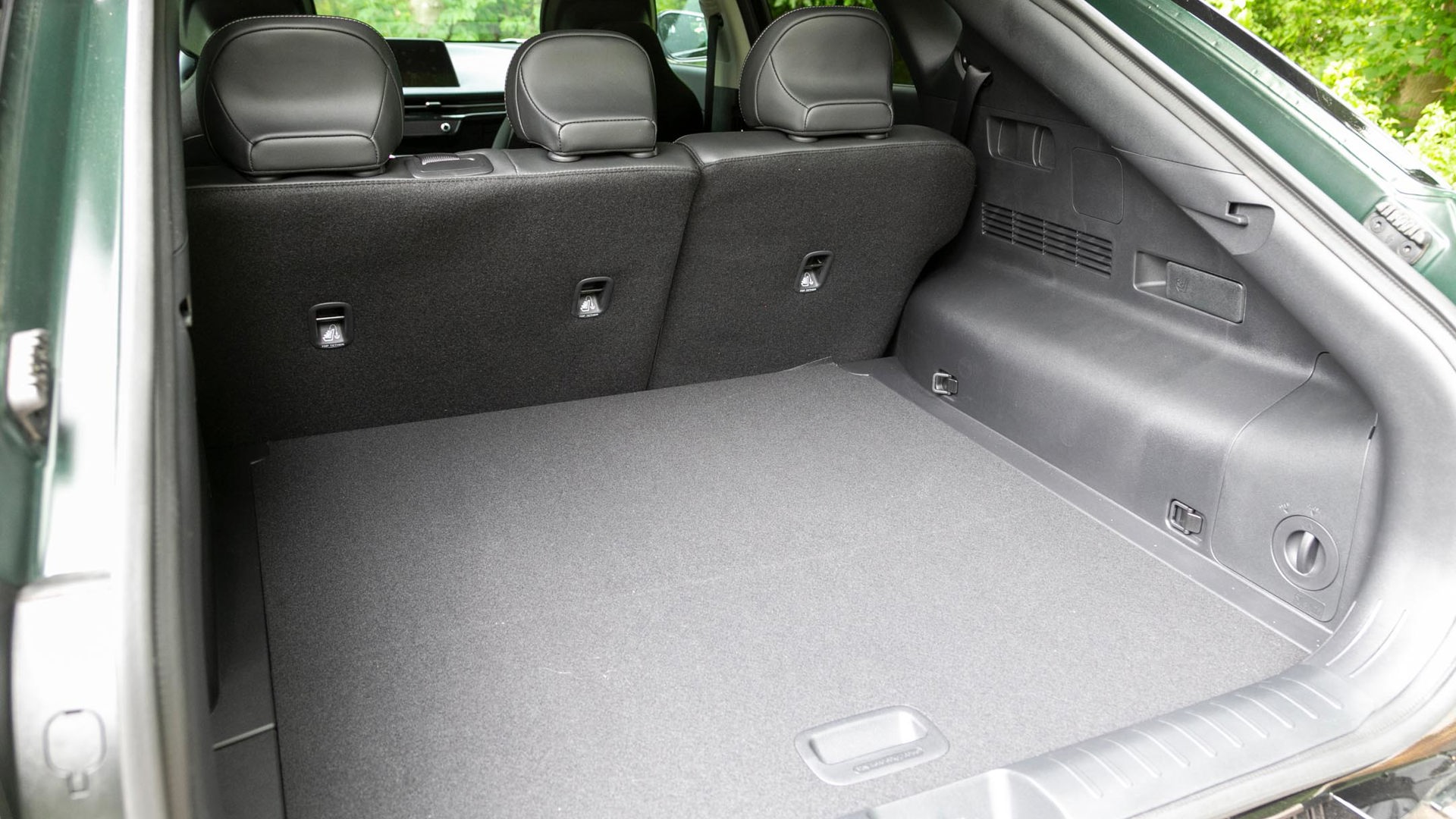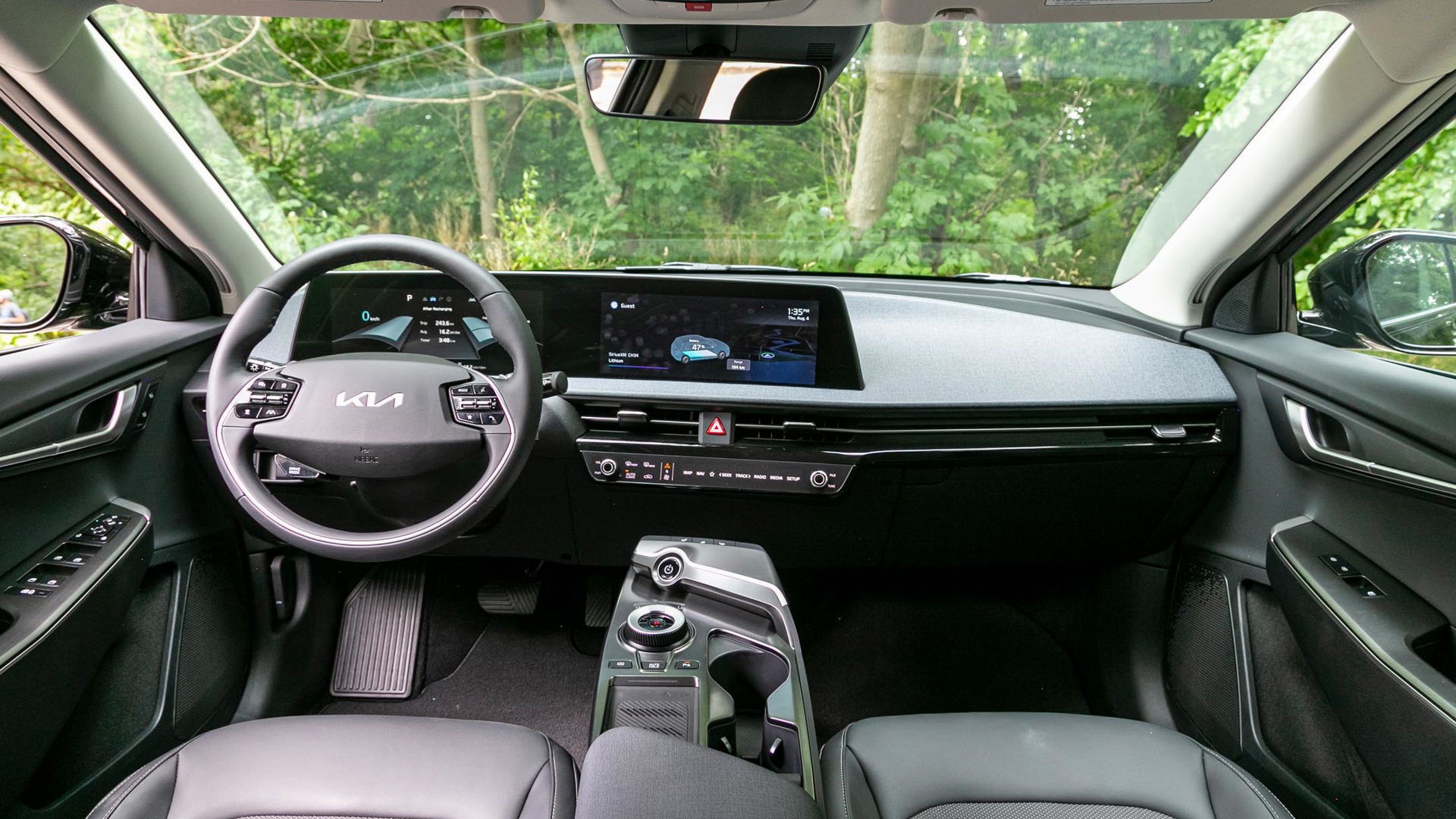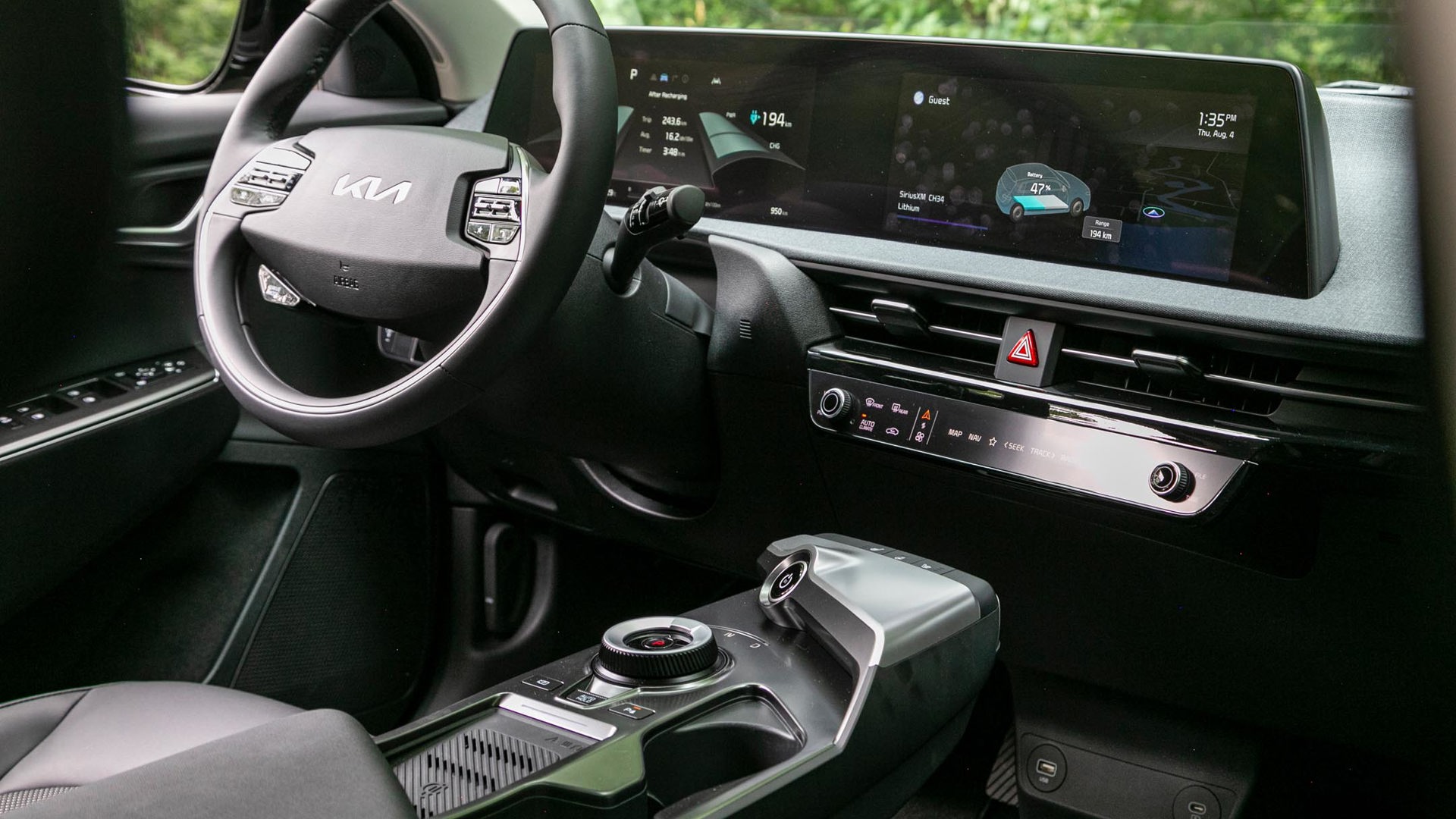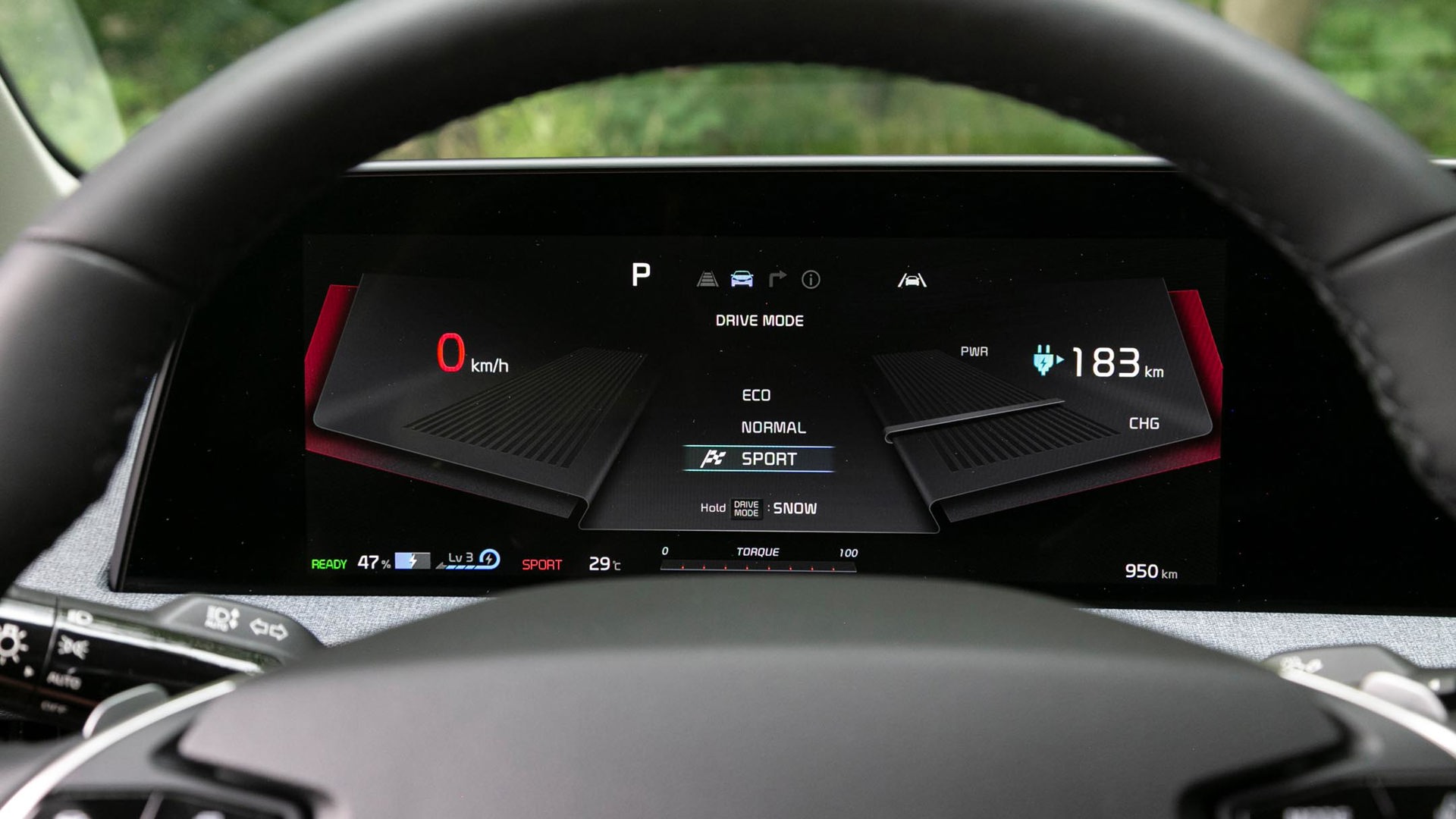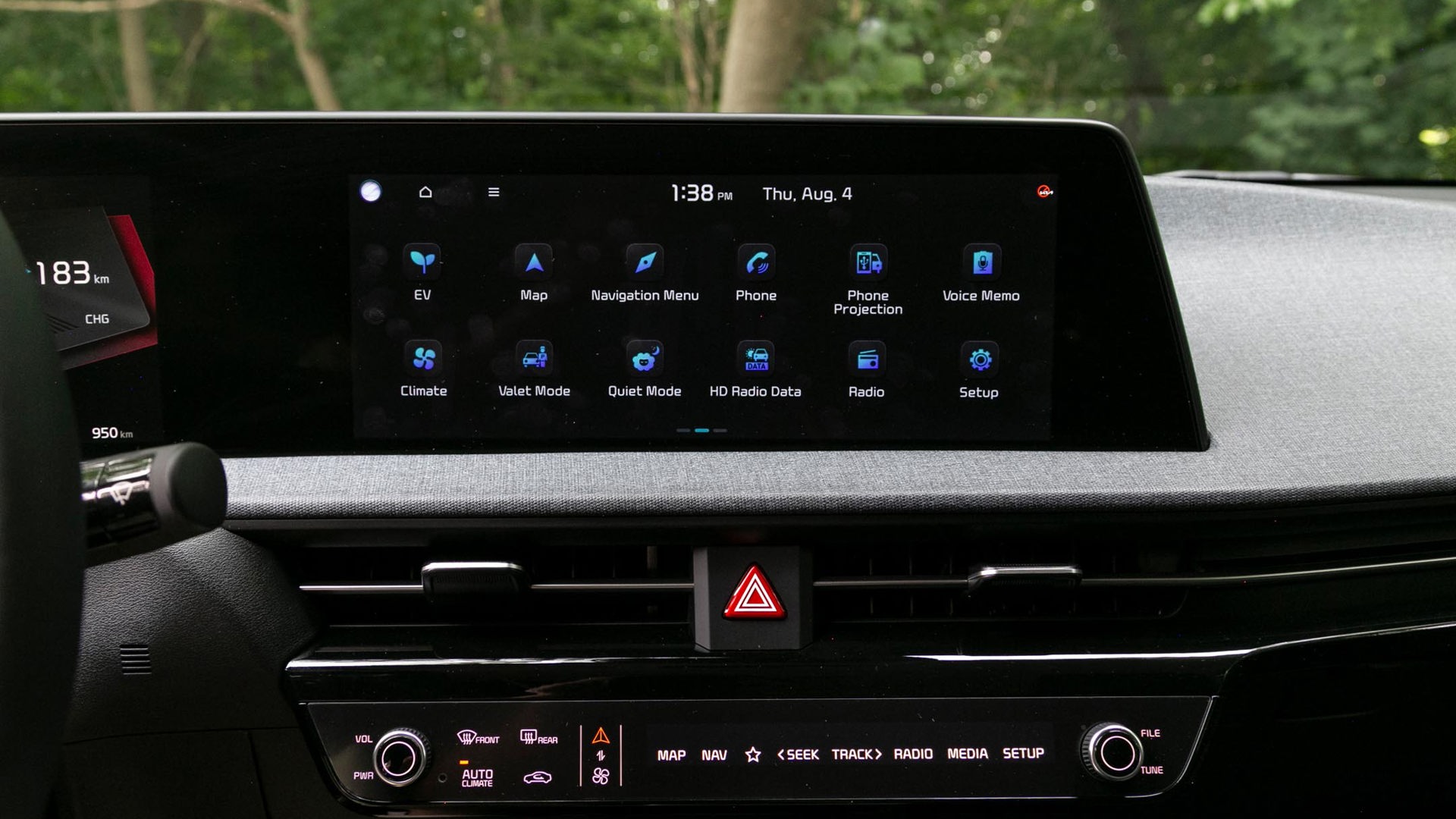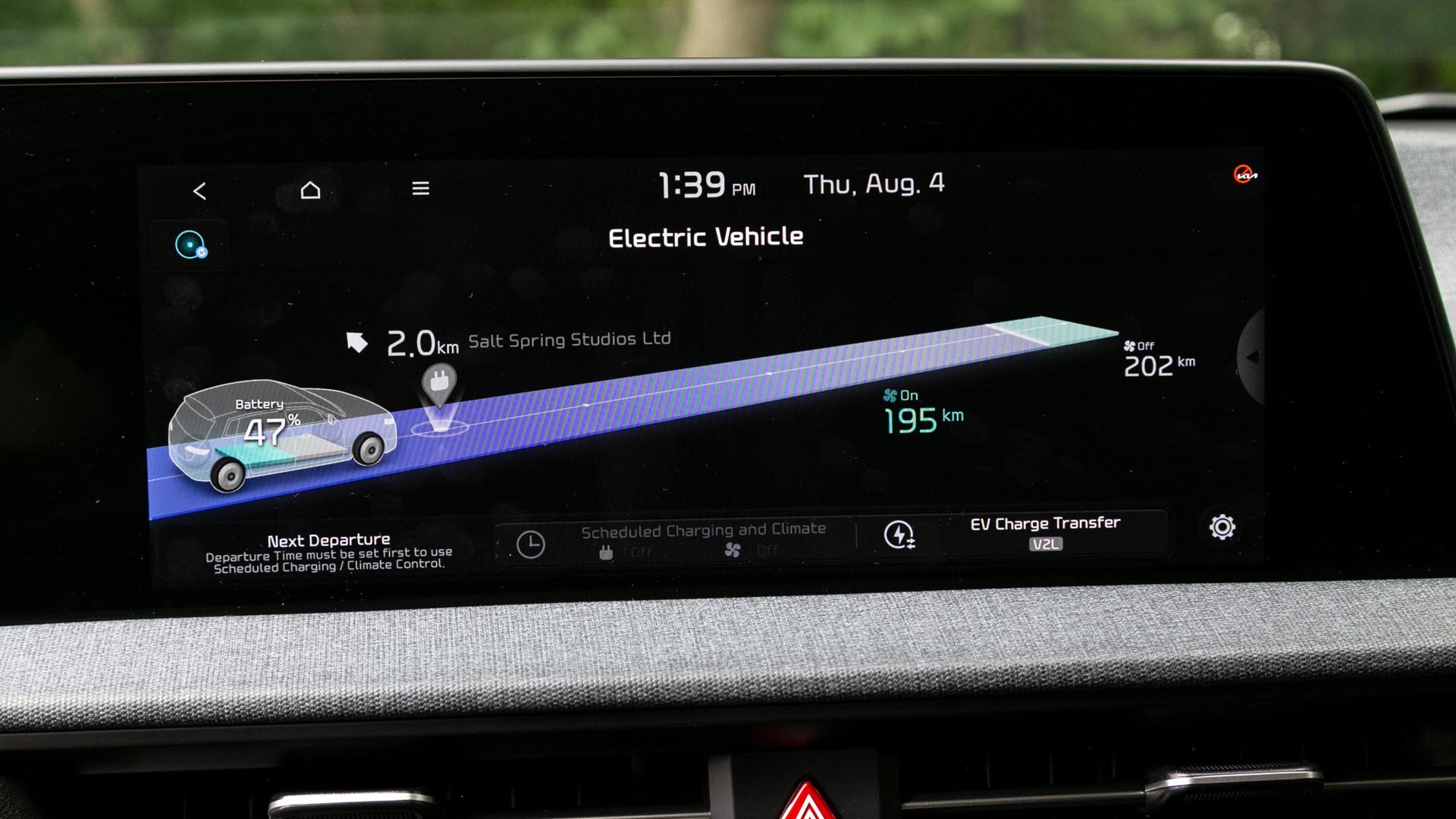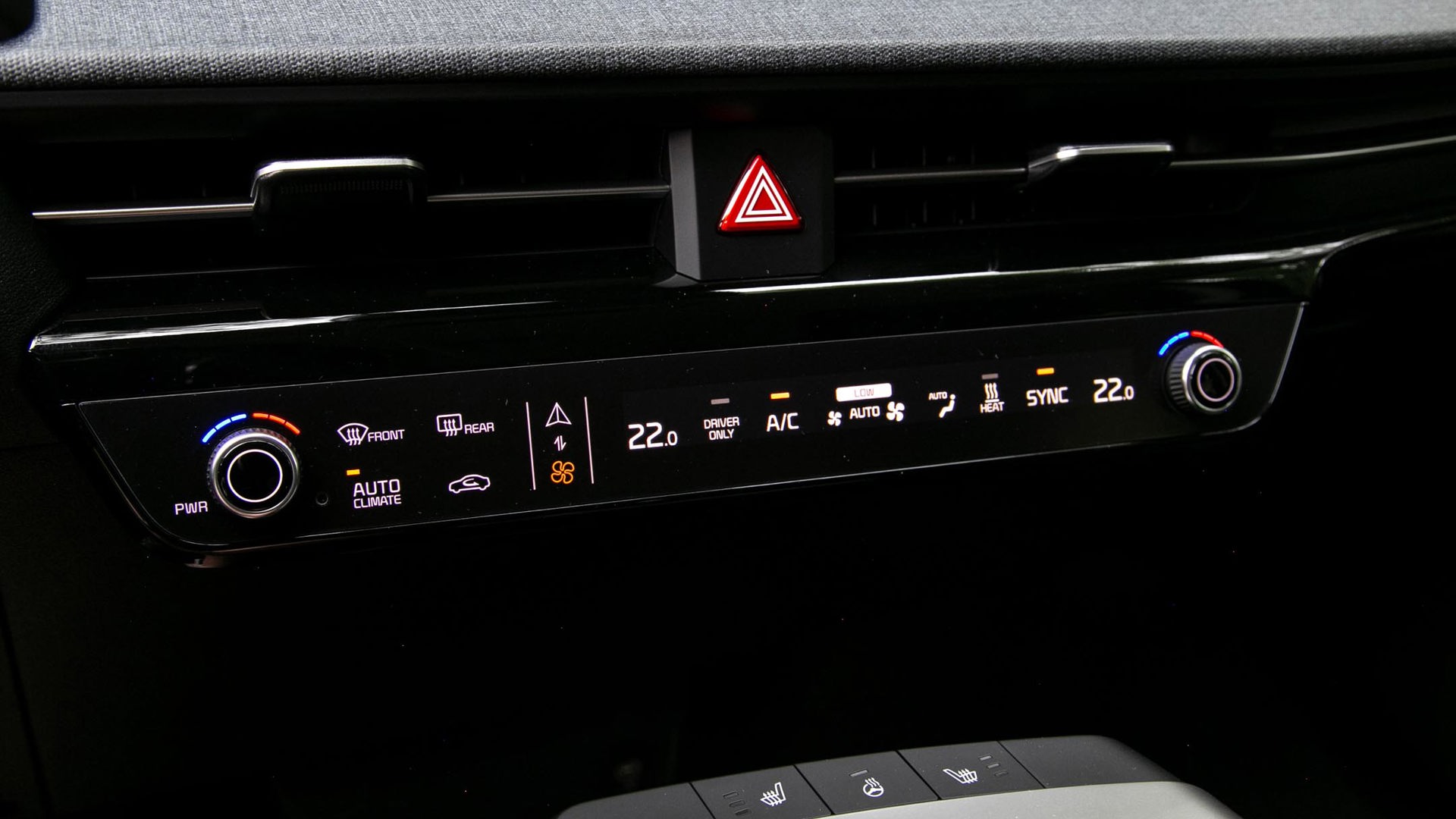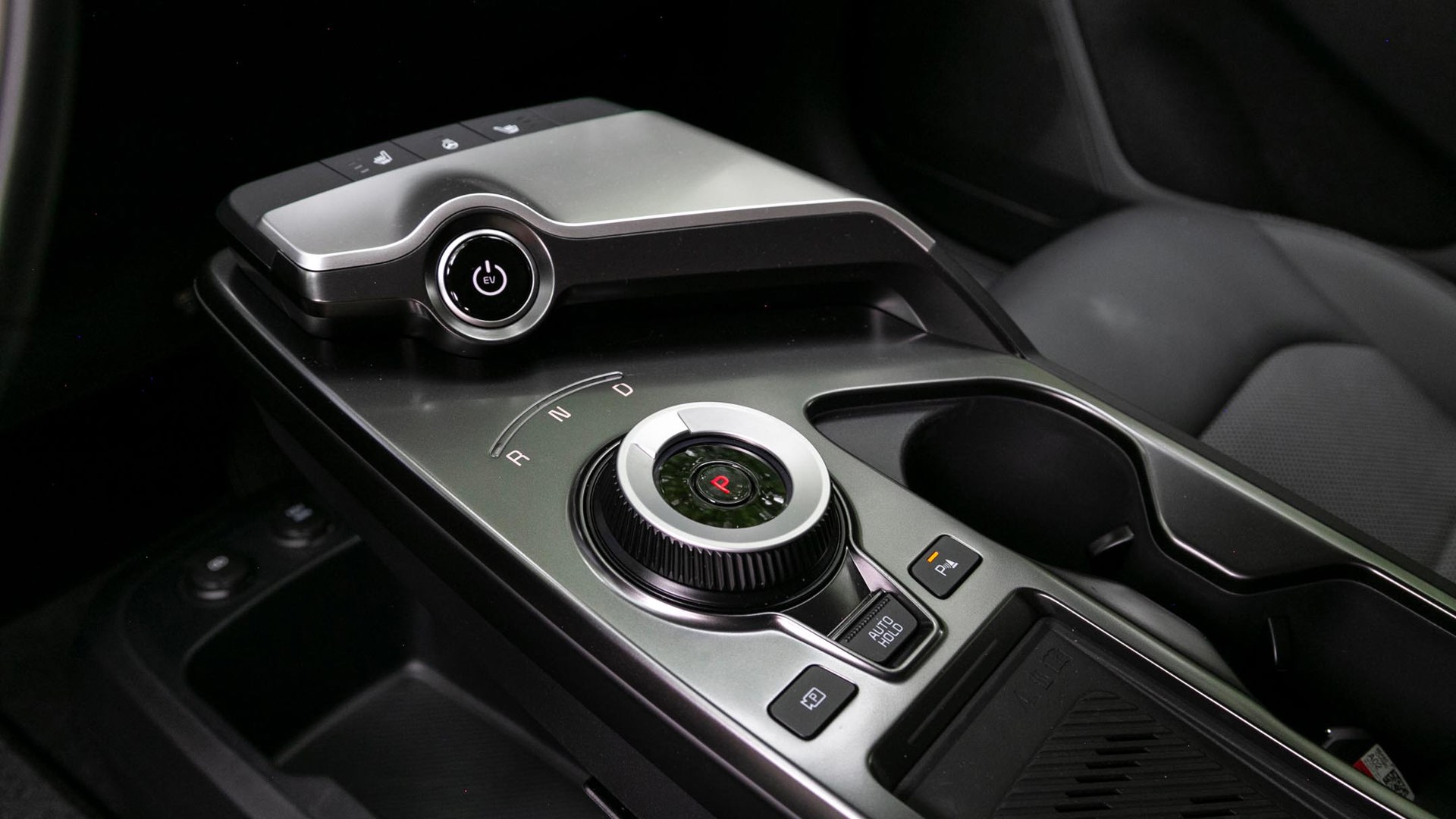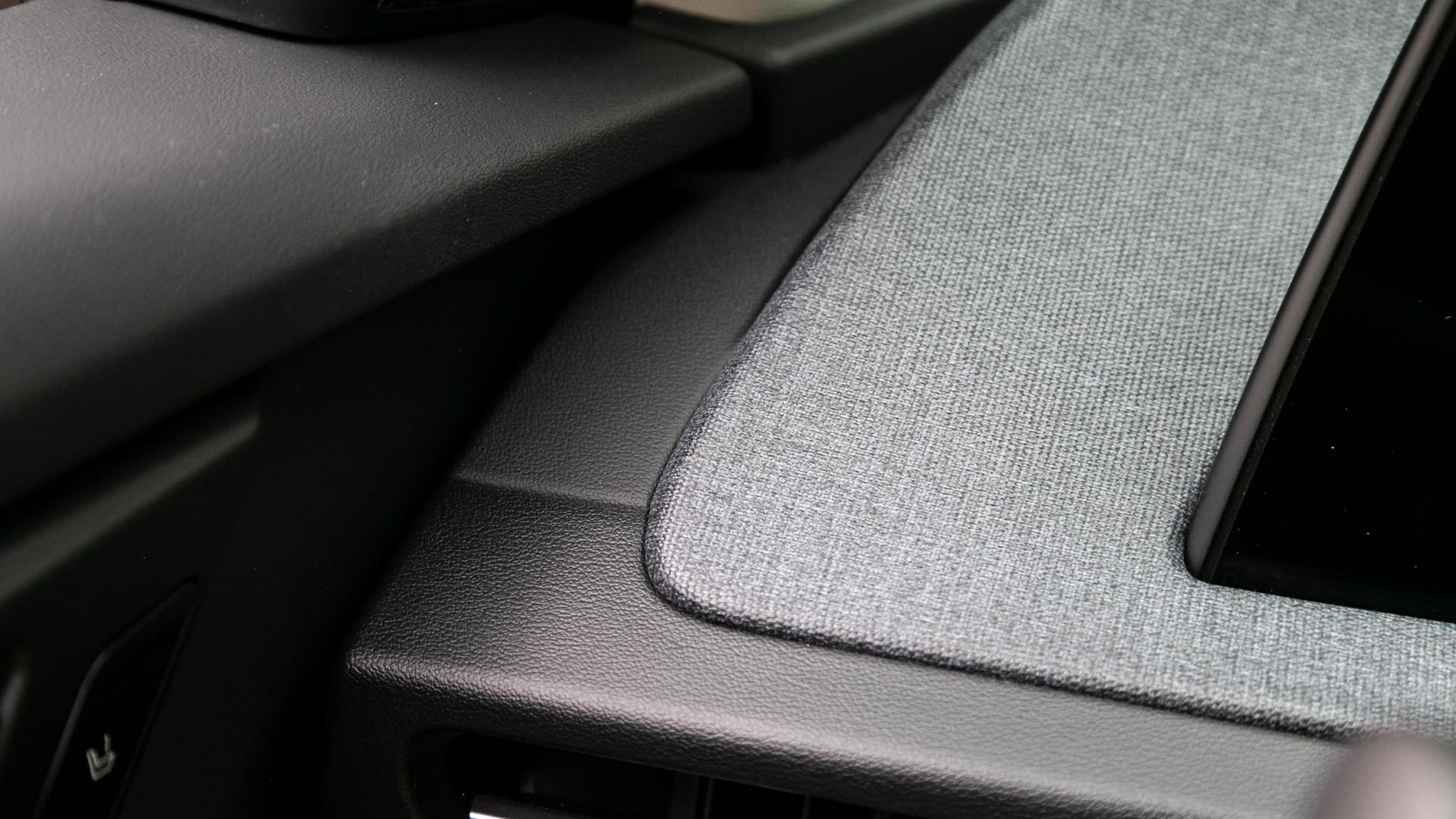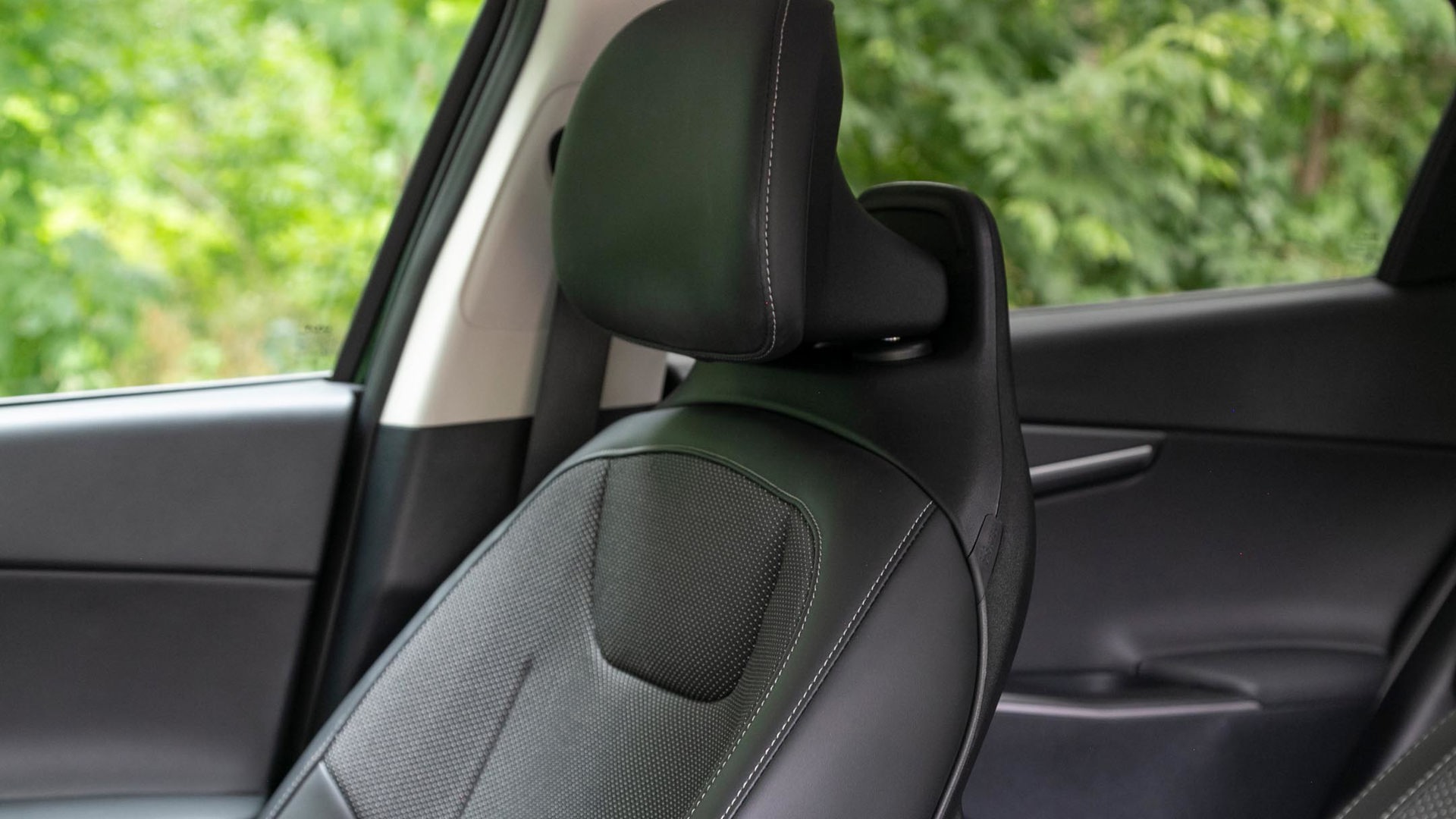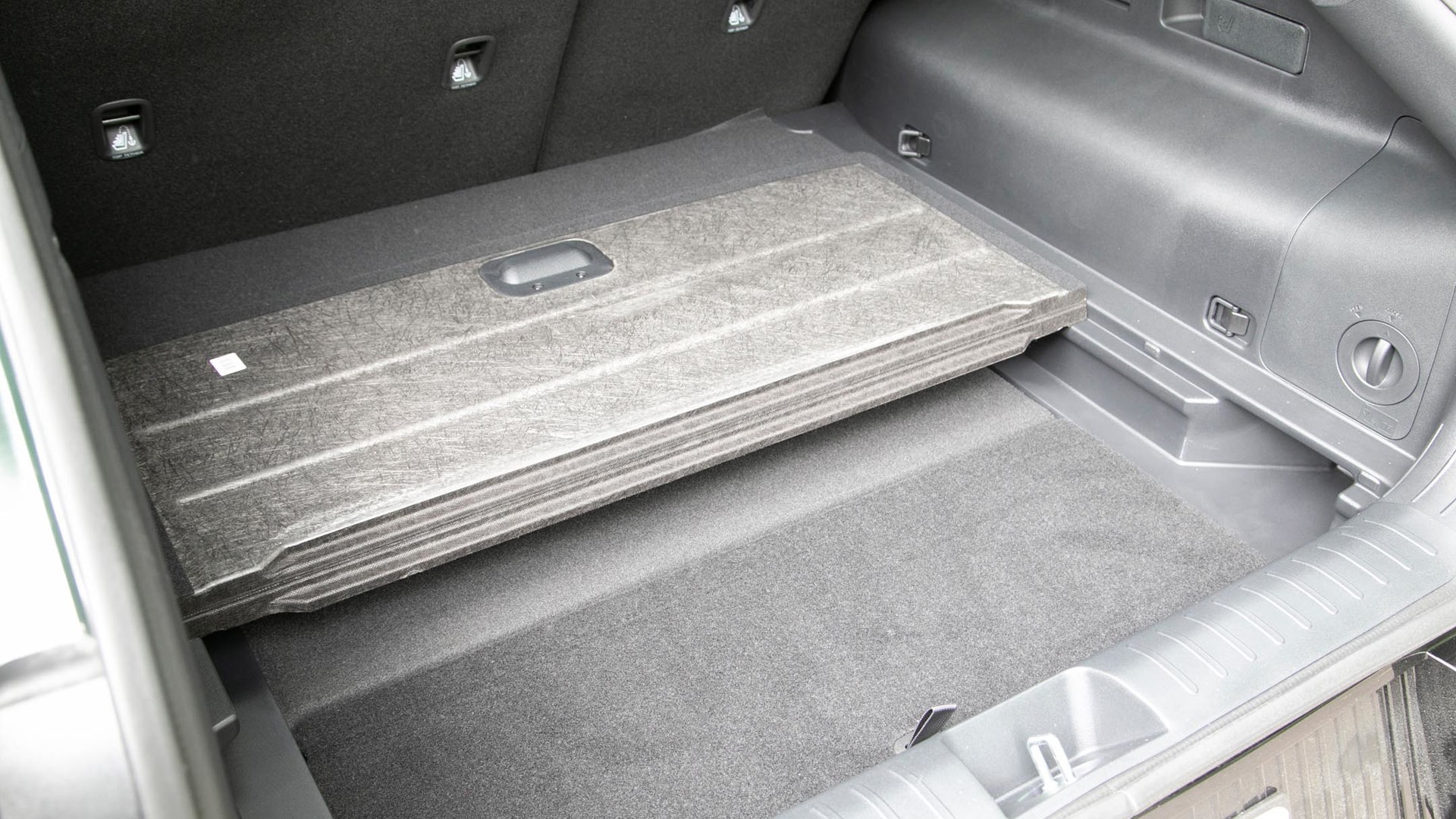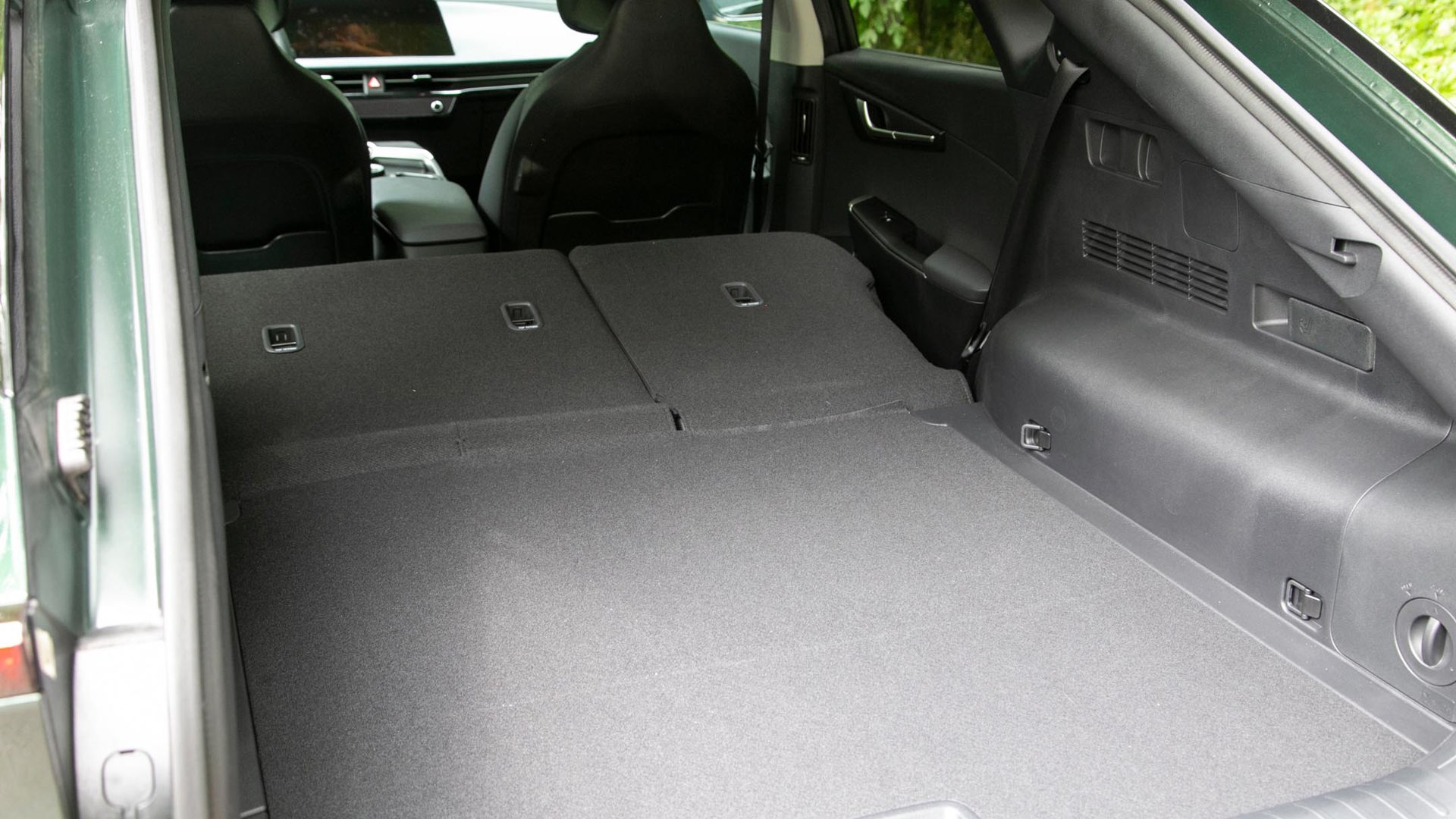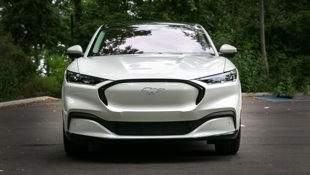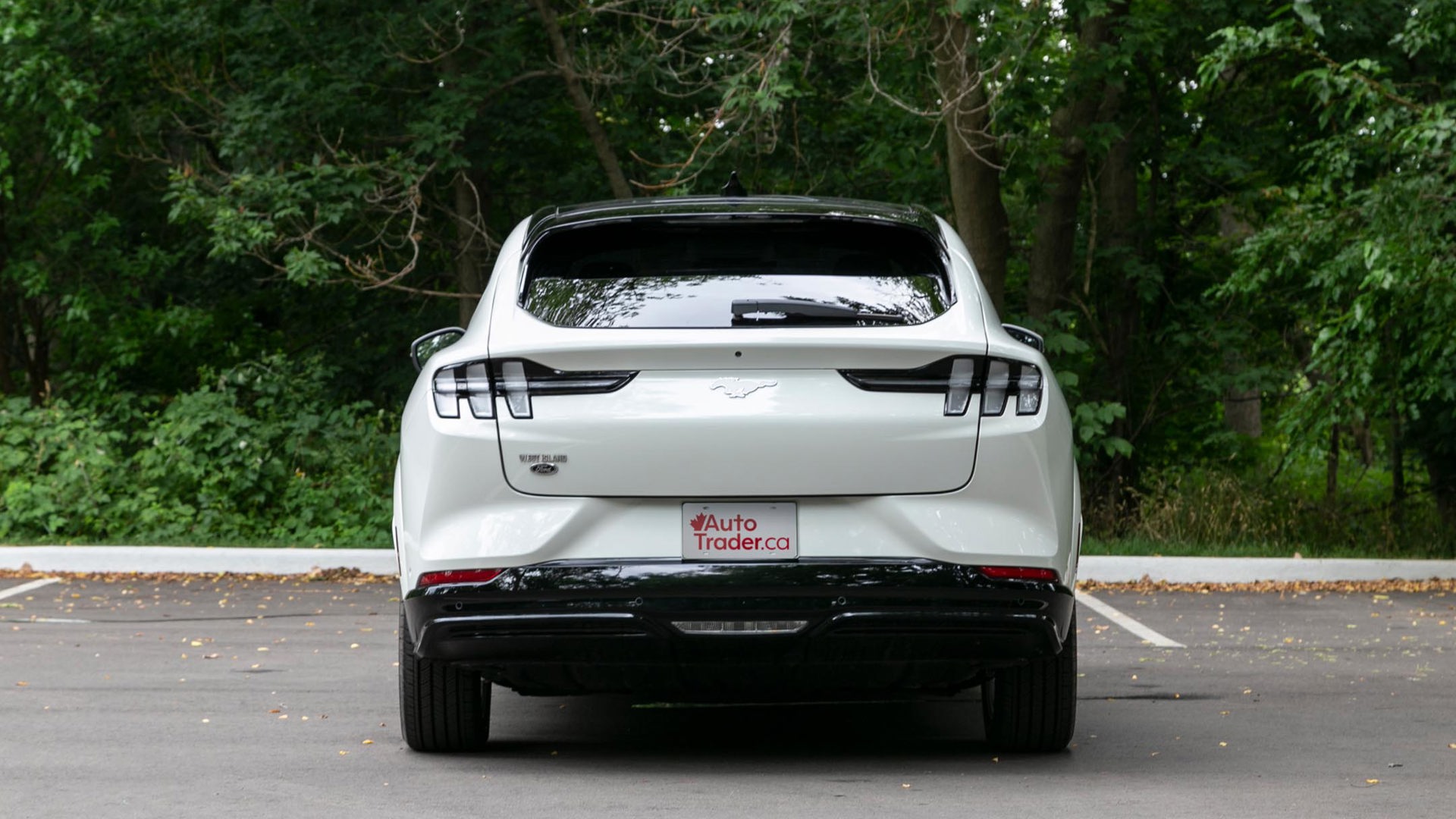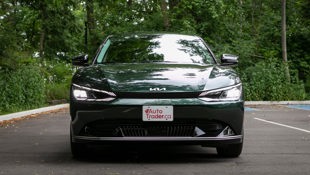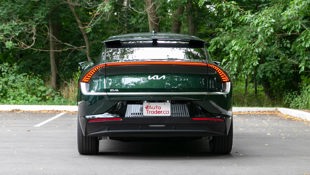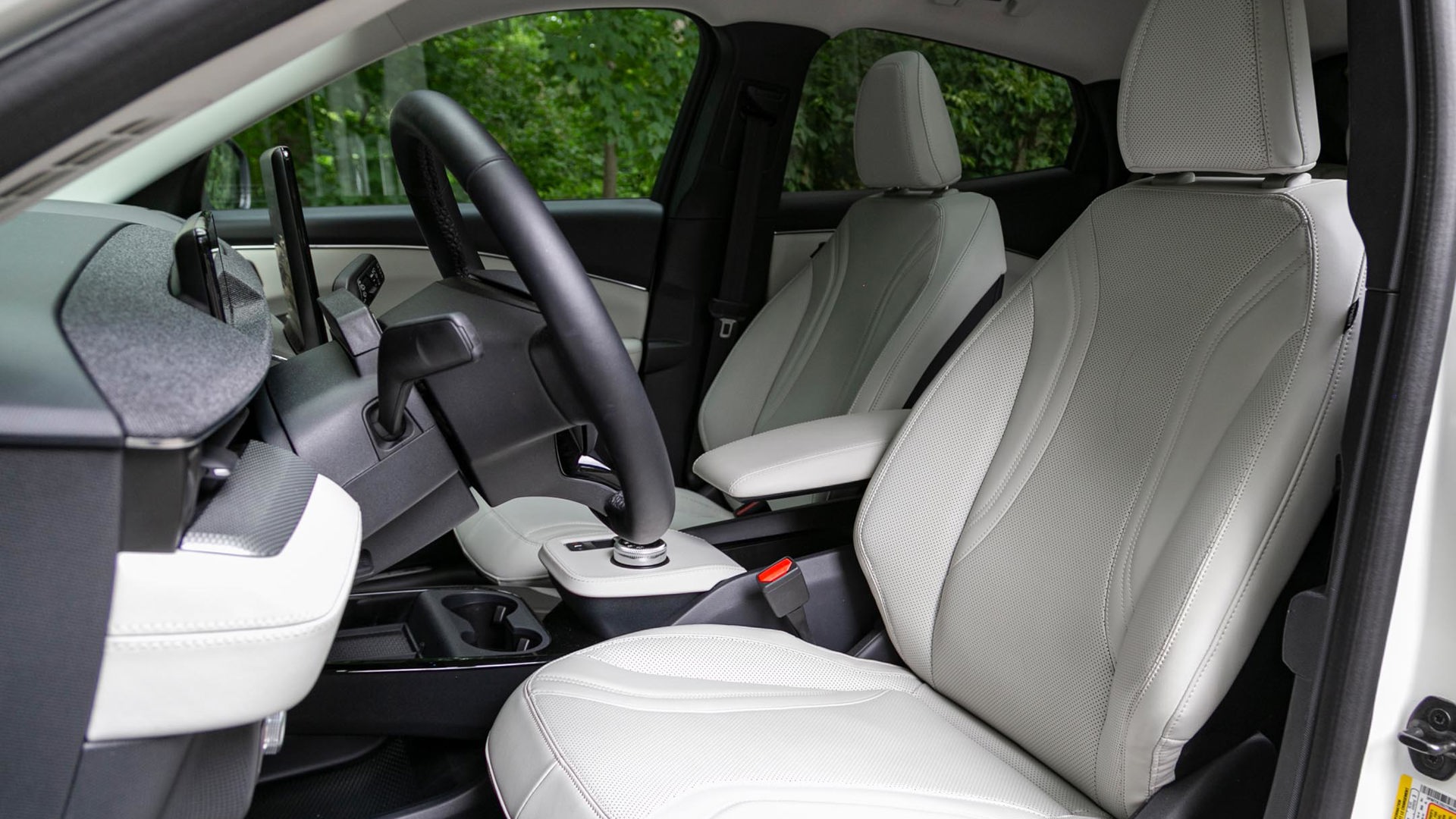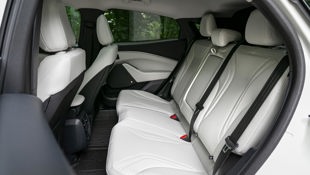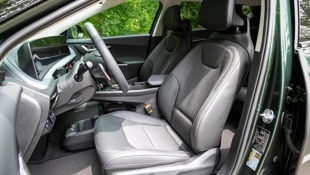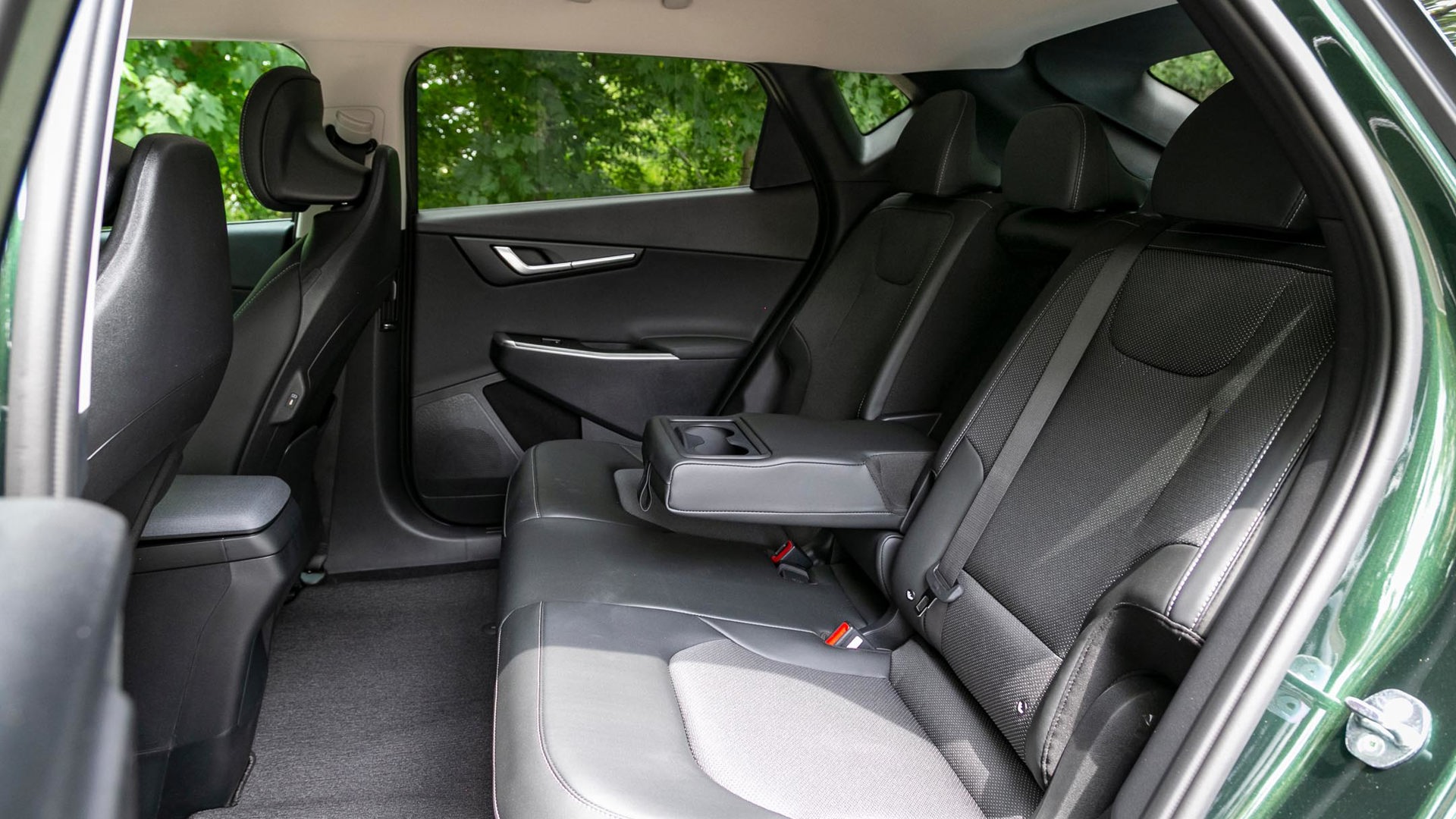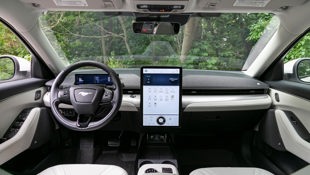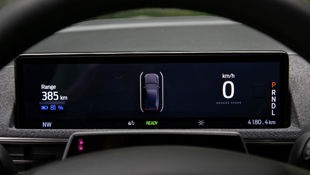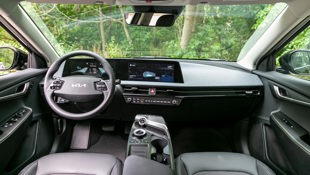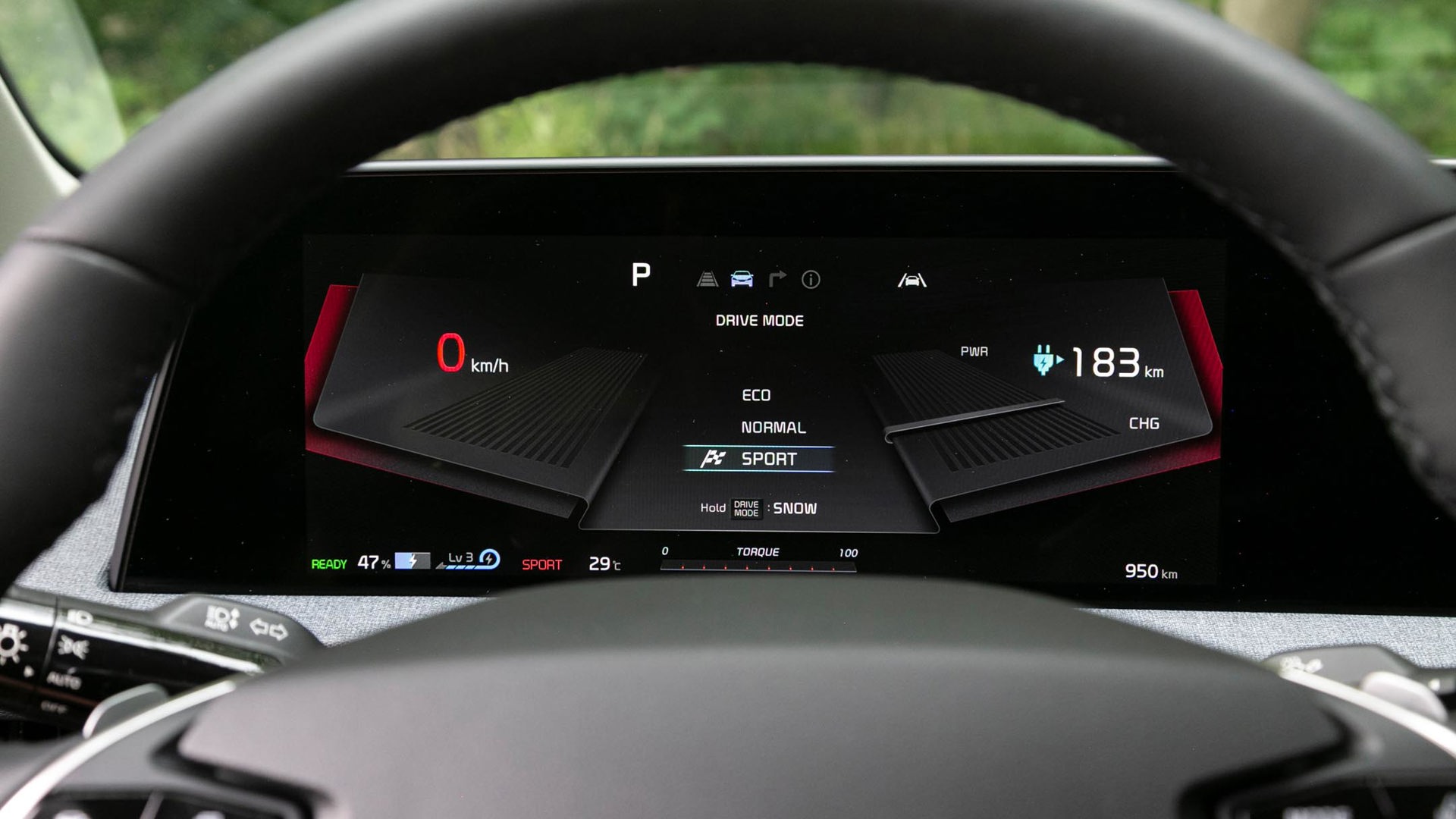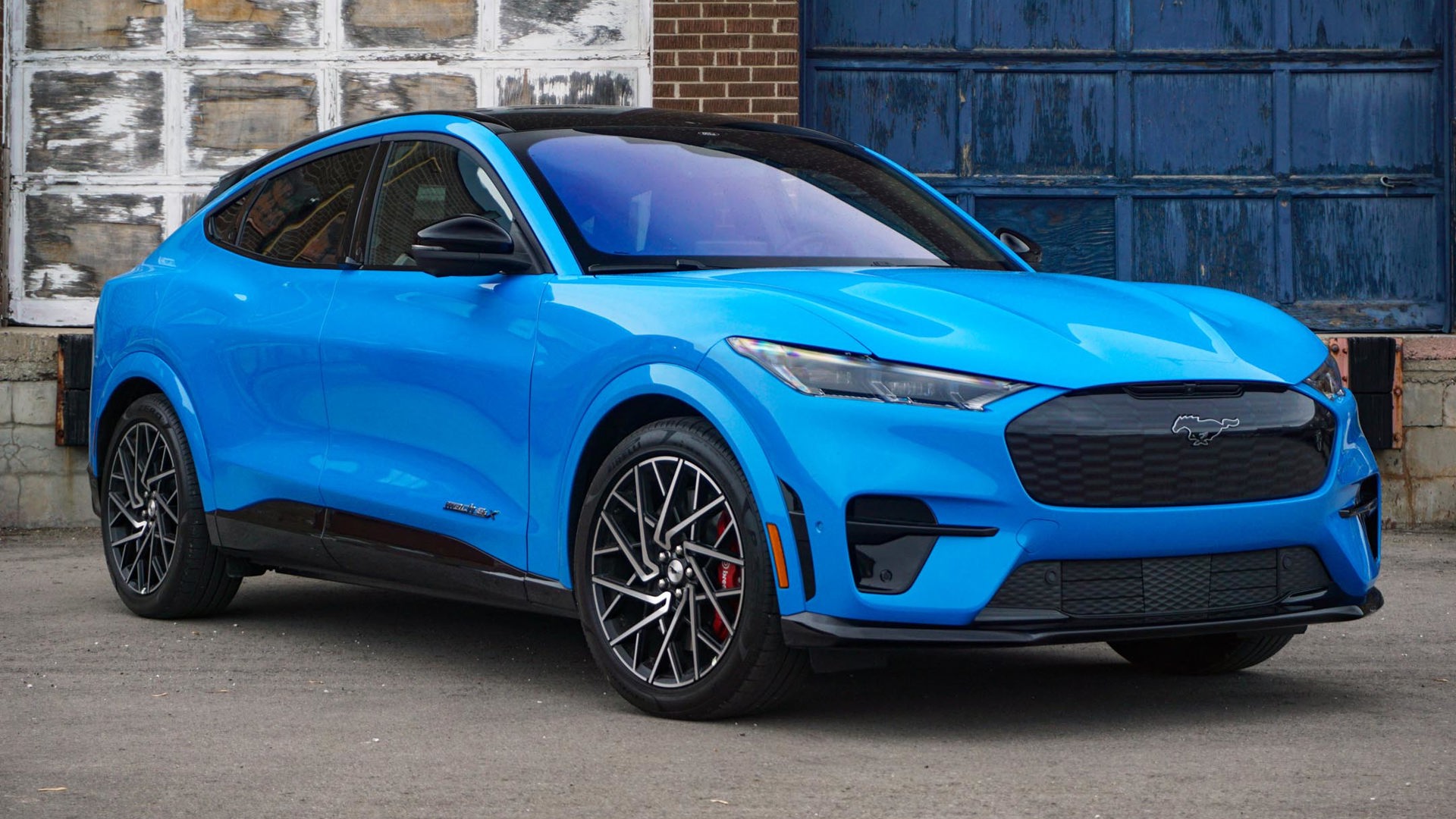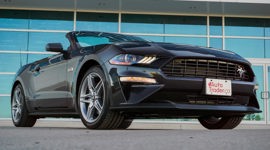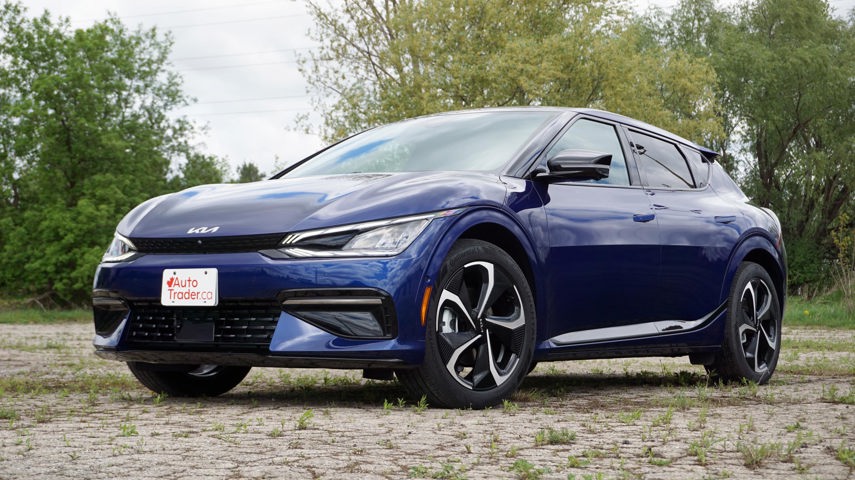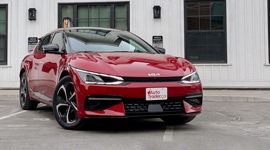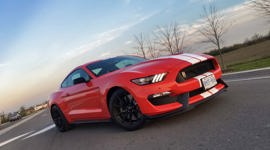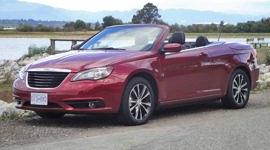Comparison Data
|
2022 Ford Mustang Mach-E Premium AWD
|
2022 Kia EV6 Long Range AWD
|
|---|---|
|
Engine Displacement
91 kWh extended battery
|
77.4 kWh battery
|
|
Engine Cylinders
Dual motor, AWD
|
Dual motor, AWD
|
|
Peak Horsepower
346 hp
|
320 hp
|
|
Peak Torque
428 lb-ft
|
446 lb-ft
|
|
Fuel Economy
2.4 / 2.8 / 2.6 Le/100 km cty/hwy/cmb
|
2.0 / 2.5 / 2.2 Le/100 km cty/hwy/cmb
|
|
Cargo Space
840 / 1,690 L seats up/down
|
690 / 1,322 L seats up/down
|
|
Base Price
$64,745
|
$54,995
|
|
A/C Tax
$100
|
$100
|
|
Destination Fee
$1,995
|
$2,000
|
|
Price as Tested
$76,690
|
$57,345
|
|
Optional Equipment
$9,850 – Extended battery, $8,000; Ice white appearance package, $1,500; Interior protection package, $350
|
$250 – Paint, $250
|
We’re amidst a massive revolution in the automotive landscape.
Not only is there a steady stream of new models arriving all the time, but it’s virtually impossible to keep up with the technological explosion in the industry these days. The quantum shift toward electrification has caused enthusiasts to worry that driving enjoyment will soon be replaced by lifeless appliances that move us from point A to point B. Fortunately, the reality is that most of the new electric vehicles (EVs) hitting the market are not only sophisticated, practical machines, but they’re also decently fun to drive.
Both the 2022 Ford Mustang Mach-E and Kia EV6 represent stellar efforts, reinforcing the notion that EVs can be a viable automotive solution for many of us. Still, both product lines offer a dizzying array of variations for drive configuration, battery size, power, and equipment levels that can make cross-shopping challenging despite these two models being extremely close in concept, dimensions, and purpose.
Looking past the hype of claimed ranges and charging times, we’ve compared two mid-trim variations where differences in value, usability, and functionality are far more important when picking a winner.
Styling
These machines each embody the current fashion of swoopy five-door fastback styling perched atop a crossover’s lower half. It seems a strange design, akin to wearing a sleek, Spandex top over camo-pattern cargo pants and hiking boots, but then I’ve never been accused of being a fashion guru.
Despite their similarities in format, the Ford is somewhat awkward and chunky, with the grille-less front end being particularly odd (and let’s not even get into the heresy of those Mustang pony badges). The jury is still out on the white-on-white-on-white look of the test car that reminds me of Elvis’s jumpsuits from the 1970s.
The Kia is sharp and angular, especially up front. The crisp accent line from the chin spoiler carries along the bottom of the flanks, carving sharply upward at the rear wheel wells and carrying on around the tail in a single strip of LED lights. In contrast, the fenders bulge muscularly, and the deep green paint on this model was gorgeous. With relatively few EV6s on the road yet, it draws a lot of stares and I suspect the Kia will age better than its 1980s retro twin, the Hyundai Ioniq 5.
Inside, Ford has clearly taken inspiration from Tesla’s Model Y with its hyper simplicity and massive touchscreen. The Kia’s interior is a little more traditional yet still represents the pinnacle of modern, minimalist design from the company, dominated by screen space. Amusingly, the Mach-E’s dashboard is covered in a handsome tweed-like fabric, while the EV6’s dash is plastic moulded to look like a tweed-like fabric, highlighting the relative cost-cutting materials found throughout the Kia’s cabin.
Ford Mustang Mach-E: 7.5/10; Kia EV6: 8/10
Comfort
Any of that cost-cutting didn’t apply to the EV6’s seats, which are comfortable and supportive. While trimmed in obviously faux leather on the outer panels, the fabric inner panels are appreciated during summer heat, especially given our tester’s lack of cooled seats. The Mach-E’s seats didn’t draw any complaints, either, offering good support but no ventilation.
The Mach-E’s more rakish profile is an illusion, with the black-painted roof portion extending high enough to offer more headroom in the rear seat, furthered by its massive panoramic glass panel. While only slightly shorter in height, I nevertheless found the top of my head brushing the Kia’s ceiling in the rear seat, but the EV6 offers more rear legroom than the Mach-E. The positioning of the C-pillar in both vehicles reduces the outward view from the rear seat.
Ford Mustang Mach-E: 8/10; Kia EV6: 7.5/10
Practicality
Being so similar dimensionally, the ability to transport five occupants in relative comfort is roughly the same between the two. The rear seats split and fold flat in both machines, and Kia should be commended for the slick system that enables either side of the rear seat to be dropped and locked into a perfectly flat position with the pull of a lever on either side of the generous cargo hold.
The Mach-E offers even more cargo space, with 840 L behind the rear seat (versus 690 L in the Kia) that expands to 1,690 L with the rear seat folded flat (versus 1,322 L). The Ford also offers an additional five litres up front in the frunk that would be a great place for a big take-out order. The Kia’s frunk, meanwhile, would struggle to accommodate more than a box of granola bars.
Ford Mustang Mach-E: 8.5/10; Kia EV6: 7.5/10
Features
Despite our best effort to line up two compatible mid-trim models for this test, the equipment levels were decidedly skewed in the Mach-E’s favour. Mid-trim for the Kia means a surprisingly spartan equipment list. While it did have features like built-in navigation, adaptive cruise control and a wireless charge pad, it didn’t have the wireless smartphone connectivity, panoramic sunroof, 360-degree camera view, or even keyless entry and power tailgate offered by this Ford. Plus, while the Mach-E’s sound system offered full, powerful sound, the EV6’s system provided meagre power and hollow, tinny sound. In fairness, each of those deficiencies (except for wireless connectivity) can be found in the loaded EV6.
The Kia also lacks a rear wiper, which will be lamented during winter drives.
Ford Mustang Mach-E: 8.5/10; Kia EV6: 6/10
User Friendliness
EVs are rolling showcases that allow the manufacturers to flex their technological muscle. Unfortunately, sometimes the quest to appear leading edge sacrifices user functionality of which both of these vehicles are guilty.
While the Mach-E’s 15-inch touchscreen is well executed with bright, crisp graphics, good responsiveness, and even a big volume knob, working with a giant iPad at speed can take more attention and time to tap through various menus and screens to access even rudimentary functions. Still, familiarity with the system builds quickly and it’s a far more sensible set up than some on the market today. During her time with the Mach-E, AutoTrader Editor-in-Chief Jodi Lai experienced a glitch in the system that rendered the system black after driving over a bump before restarting again a short while later.
The EV6’s 12.3-inch touchscreen and menus will be familiar to anyone who’s driven a high-trim Kia or Hyundai in the past few years. It, too, is responsive and fairly easy to navigate. The driver faces a second 12.3-inch screen for the primary gauges, but instead of making the speedometer predominant, the majority of the screen’s real estate is taken up by strange 3D graphic bars depicting relative speed and electricity consumption/regeneration.
A single touch panel bar switches between audio controls and climate controls. It’s a slick gimmick that helps minimize the number of buttons, but requires an extra tap to change the temperature if it’s in audio mode, or to change the volume if it’s in climate mode. A little detail, perhaps, but it adds needless complexity to driving the car.
The Mach-E has electrically-actuated door openers that require a button push, and tugging on a little tab for the front doors, and sliding your hand inside the door for the rears. It’s unusual but you get used to it. Conversely, Kia has fitted the EV6 with pull levers that nest within the door.
Ford Mustang Mach-E: 7/10; Kia EV6: 6.5/10
Safety
The technology applies to the safety of these vehicles, too, with many of the active safety features included as standard equipment. Both provide lane-keeping assist, forward collision mitigation, and driver attention warning. The Mach-E also includes reverse brake assist and collision avoidance, along with active parking assist and their new BlueCruise system that enables hands-free driving on selected highways.
Blind-spot collision avoidance, rear cross-traffic collision avoidance, and Kia’s advanced highway drive assist are only available on top-spec GT-Line EV6s.
Ford Mustang Mach-E: 9/10; Kia EV6: 8/10
Driving Feel
EV platforms keep heavy battery packs in the floor, resulting in low centres of gravity. With proper suspension tuning, this helps them corner flat and handle decently, but these are still heavy machines, and it’s easy to overpower the all-season touring tires when cornering, causing them to howl in protest. Steering feel is negligible in both, but the steering is quick enough that despite the size of these machines they can be zipped through traffic with relative ease.
Many EVs, including these two, offer a one-pedal drive mode that applies strong enough regeneration to negate the driver’s use of the mechanical brakes in most normal drive conditions. It’s a great system that helps increase range and is easy to get used to, but between these two, the Kia was smoother and easier to modulate, with the Ford being a bit clunky in the transition from stop-to-go. (It also offers varying levels of regeneration, whereas the Ford’s is either on or off.)
Ford Mustang Mach-E: 7/10; Kia EV6: 7.5/10
Power
The lack of engine noise and vibration are great aspects of driving an EV, but the smooth, immediate power delivery can be addictive. Instantaneous torque means either of these two can effortlessly leap across an intersection and make distance from most of the rest of traffic. The dual motor all-wheel-drive Mach-E Premium dispenses 346 hp and 428 lb-ft of torque to propel its 2,232 kg (4,921 lb). The EV6’s dual motors combine for 320 hp and 446 lb-ft to move 2,114 kg (4,661 lb).
Unsurprisingly, neither feels appreciably quicker than the other, with both offering plenty of motivation regardless of whether pulling away from a stop or passing at highway speeds. Published acceleration tests regularly put these two in the mid-five-second range from zero to 100 km/h, but quick versions are available for those seeking more performance.
Ford Mustang Mach-E: 8/10; Kia EV6: 8/10
Fuel Economy
Official government ratings show the Kia is the more efficient vehicle with a combined rating of 2.2 Le/100 km versus the Mach-E’s 2.6. In the city, the disparity between the two is greatest, at 2.0 versus 2.4 Le/100 km, and an annual cost estimate to run these two 20,000 km comes in at $597 for the Kia and $693 for the Ford. For context, a typical compact SUV would likely cost around $2,000 for the same distance travelled.
The Mach-E is rated at 446 km of range versus the EV6’s 441 km, a difference so negligible that it’s meaningless in the real world. More important is that on a Level 2 charger, the Kia’s 77.4-kWh battery can be completely charged in 8.4 hours versus the Ford’s 88 kWh battery in 10.7 hours. The Kia is also rated to handle higher charge rates at high-speed Level 3 chargers, but this can be dramatically affected by ambient temperature, the current state of charge of the battery, and – more often than any other factors – the functionality of the charger itself that can be notoriously finicky.
The reality is that with home charging, both of these EVs have more than enough range to serve the vast majority of driving needs for most drivers. Even with plenty of errand runs, commuting on the highway, and simply driving around for the joy of it, there was still no need to plug in more than a couple of times during the entire week of testing, and with a Level 2 home charger, it’s easy to set off fully-charged every morning, if so desired.
Ford Mustang Mach-E: 9/10; Kia EV6: 9.5/10
Value
The 2022 Ford Mustang Mach-E wears a lot of hats, from value-leader EV to high-performance machine, and it requires a broad price range to stay competitive with everything from the Kia’s EV6 to Tesla’s Model Y. A standard range rear-wheel-drive Mach-E is $51,495, with four-wheel traction bumping it up to $54,195, and our Premium trim tester topping $64,000 before $10,000 in options were applied. A loaded up GT model can push past $90,000.
Meanwhile, the 2022 Kia EV6 starts at a very reasonable $44,995 for the Standard Range version. Our mid-trim long-range variant with all-wheel drive wasn’t lavishly appointed, but it’s good, solid, electrified transport that rings in at $54,995. Step up to an EV6 GT-Line with every option and it’ll still only reach $61,995.
Both cars are eligible for the federal government’s $5,000 rebate program.
Ford Mustang Mach-E: 6/10; Kia EV6: 8/10
The Verdict
At the end of the comparison day, the Mach-E was the EV we’d most like to live with day-to-day, largely because its features made it more liveable and enjoyable to drive. Had our EV6 tester been a GT-Line, it would’ve been a much tougher decision, but regardless of which trim, the Kia’s significantly better value, and quicker charging time makes it the better choice of these two and the winner here.
